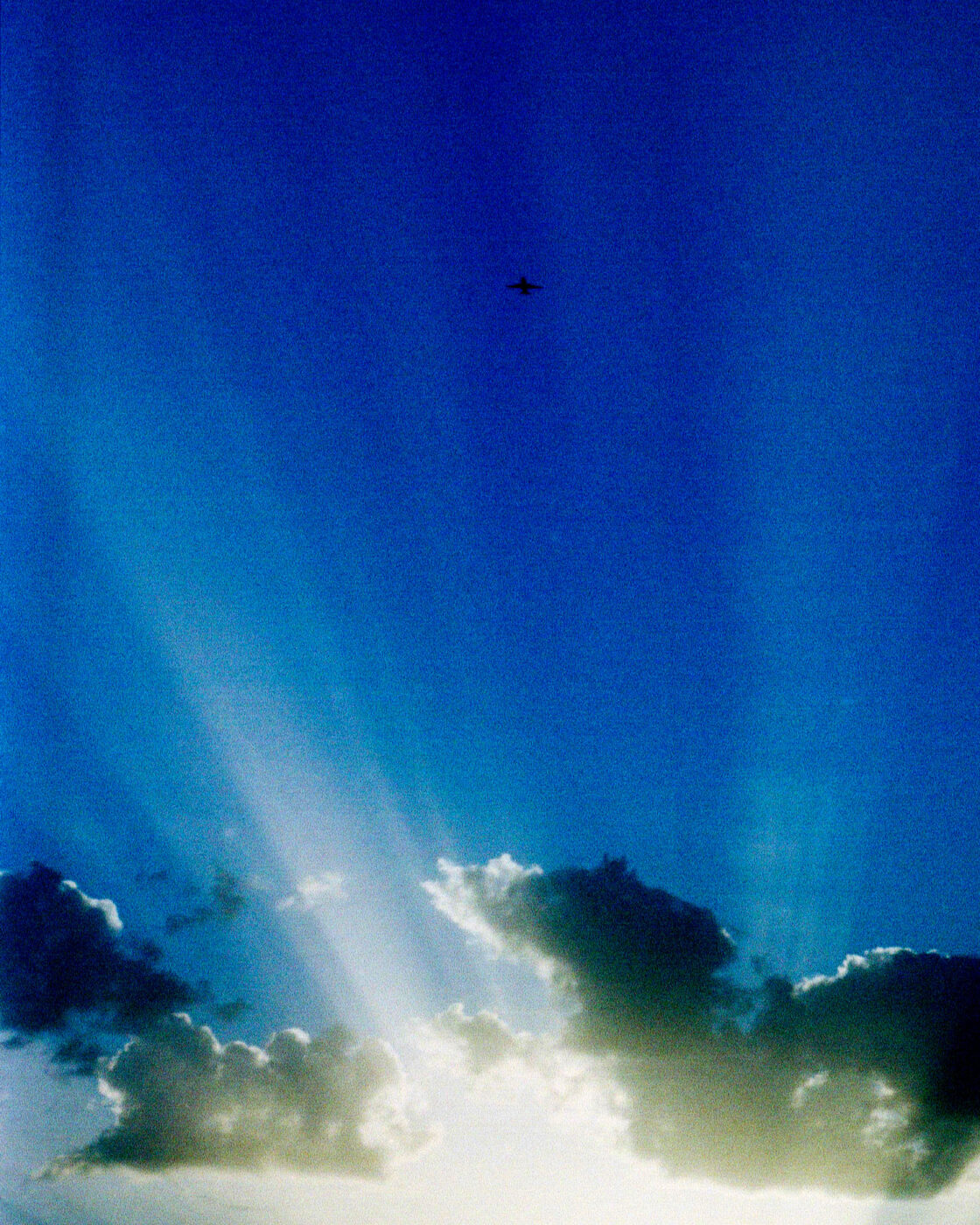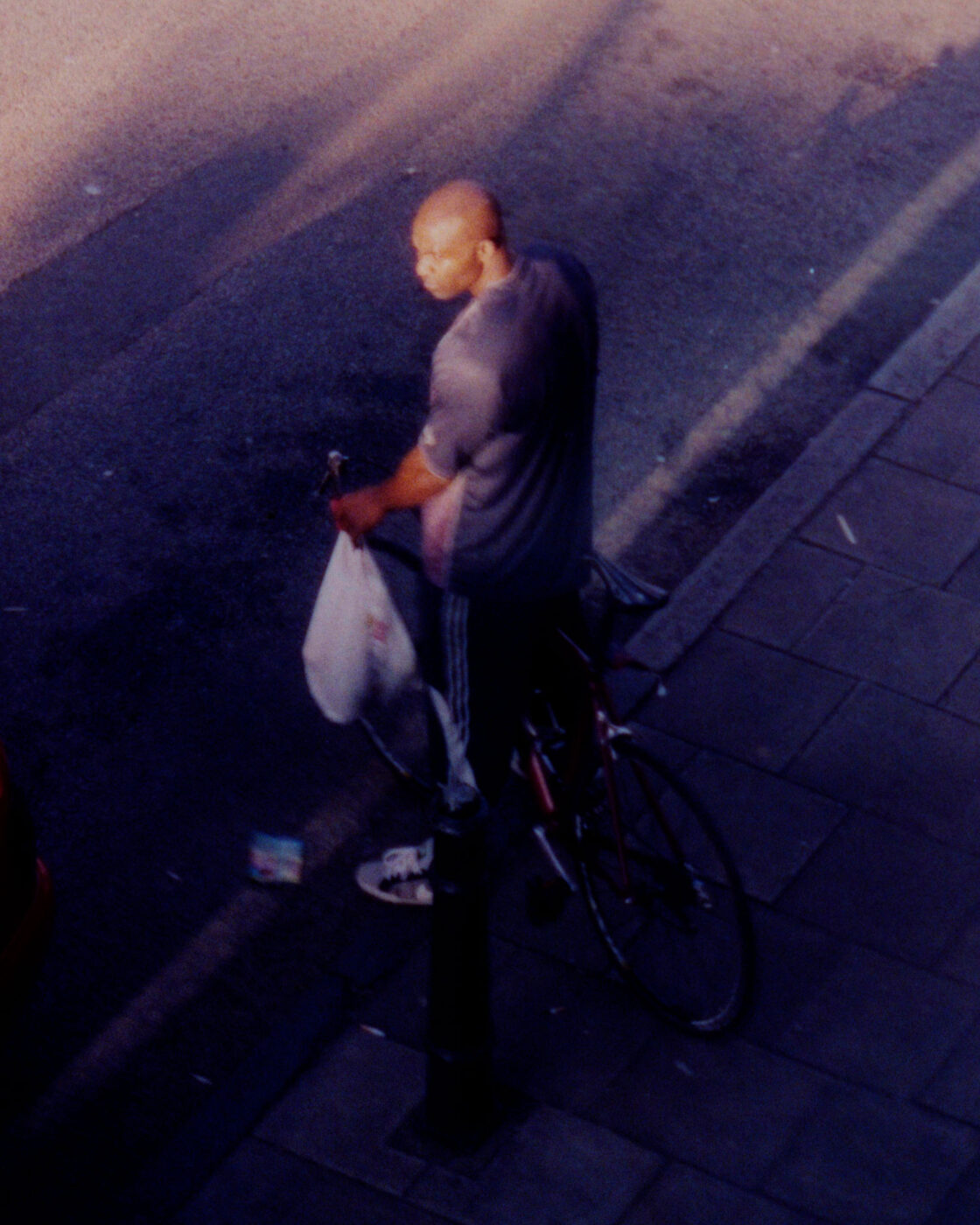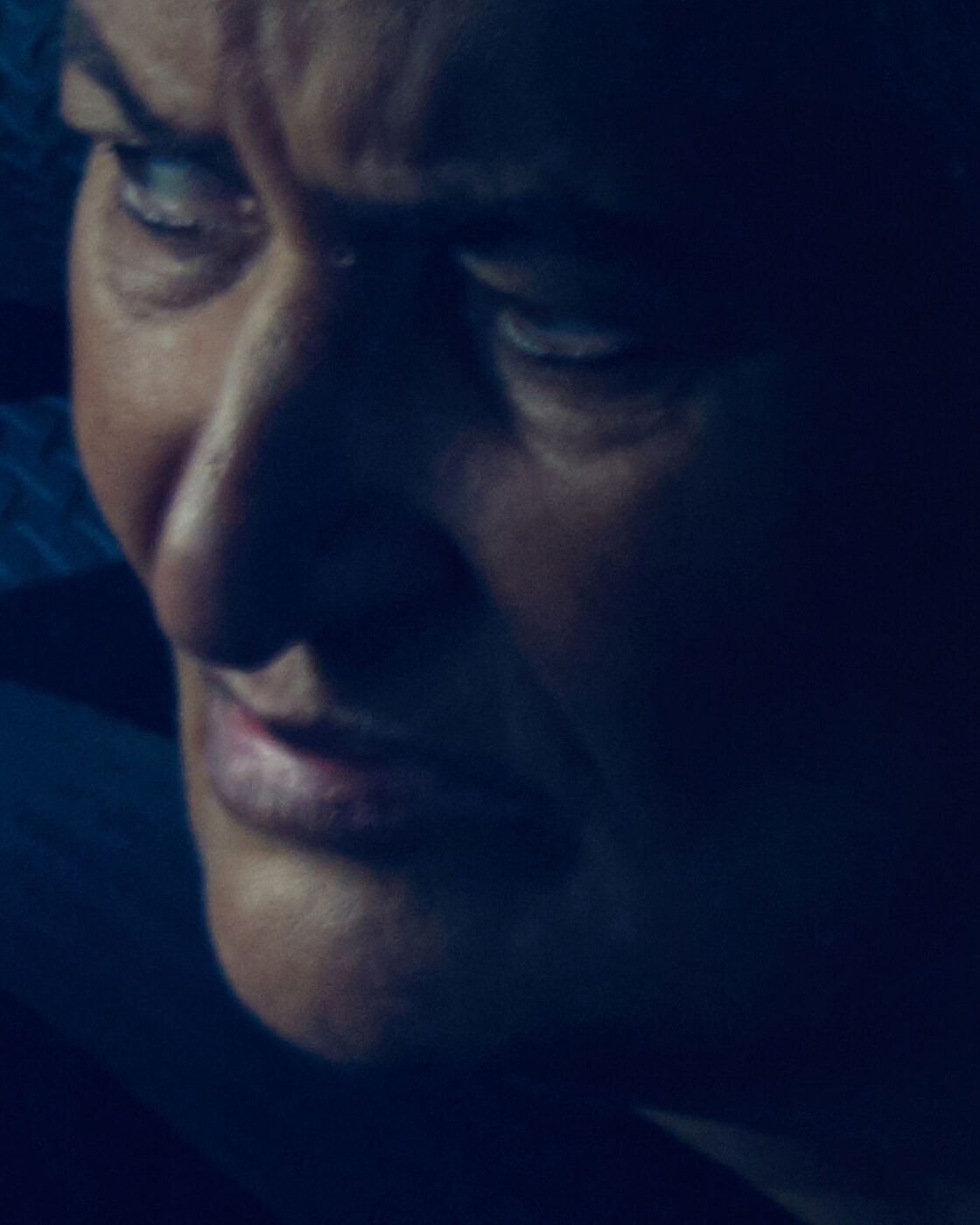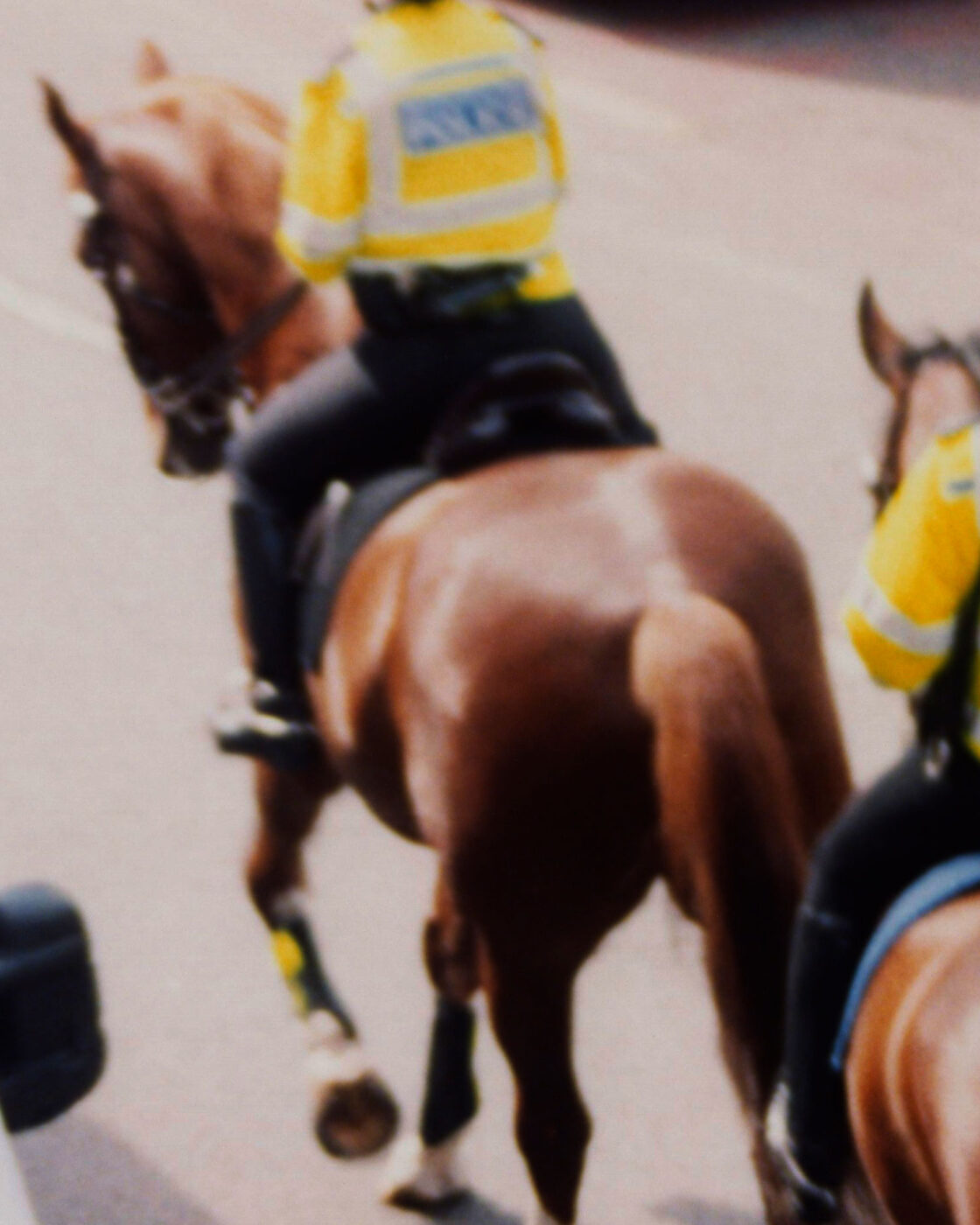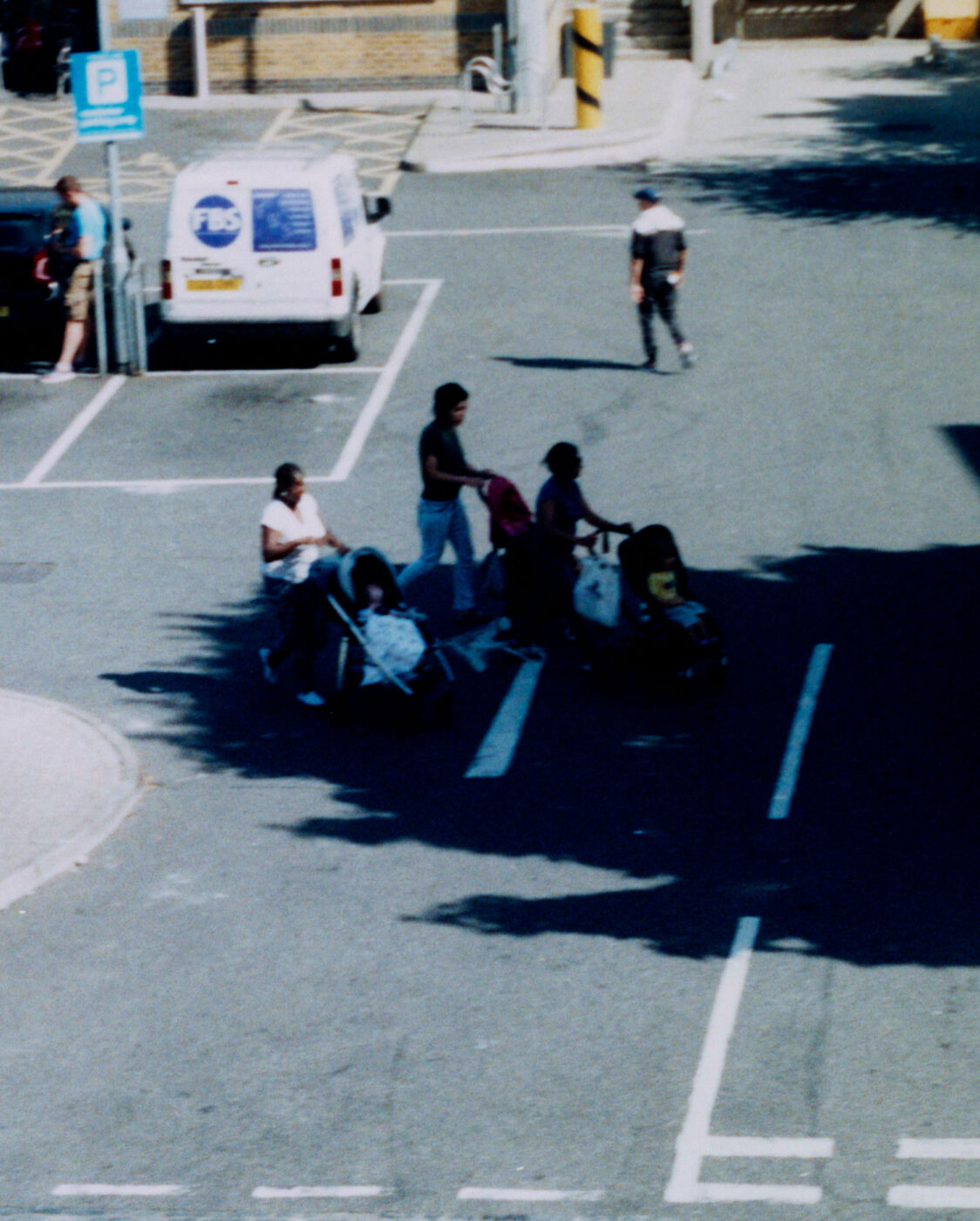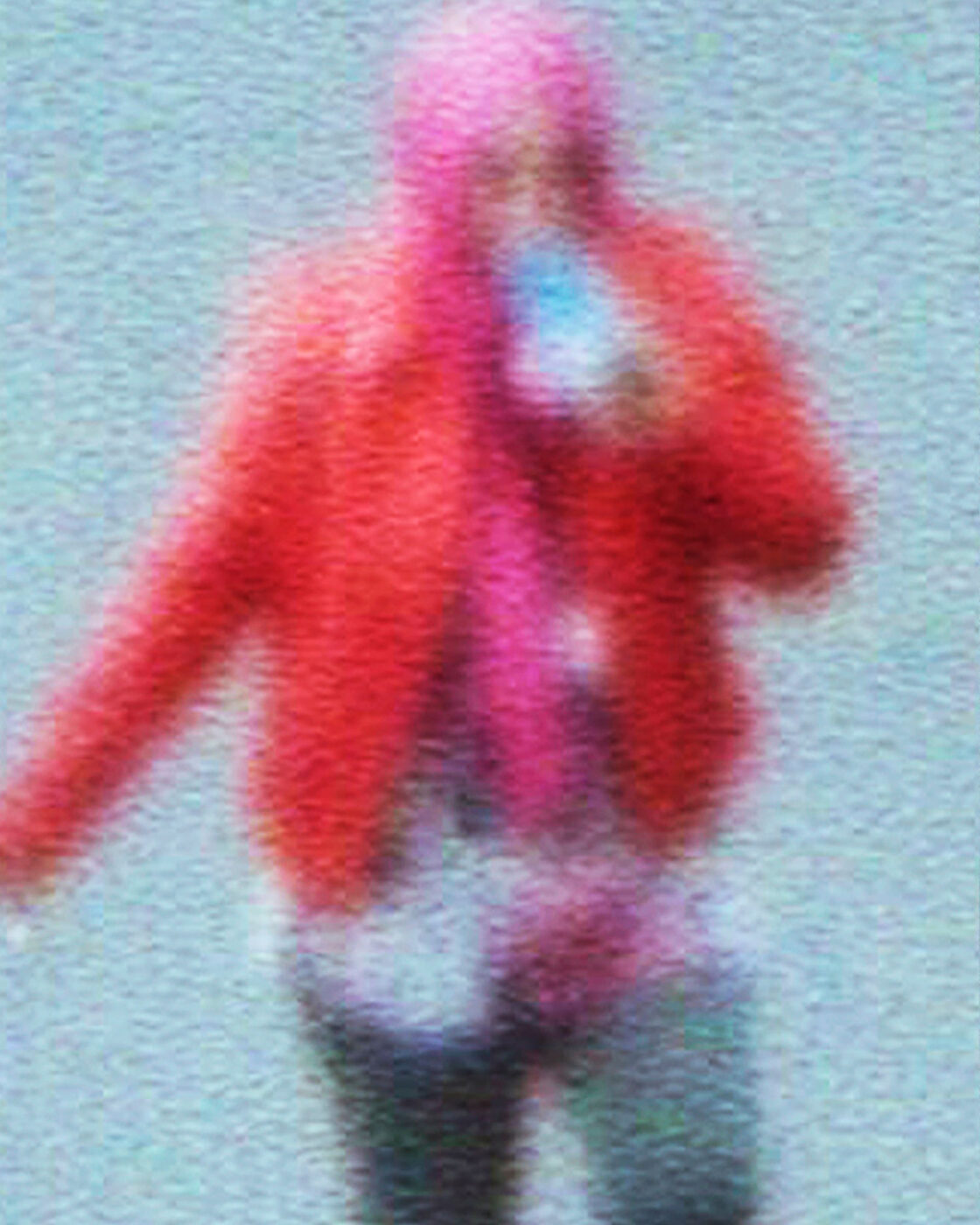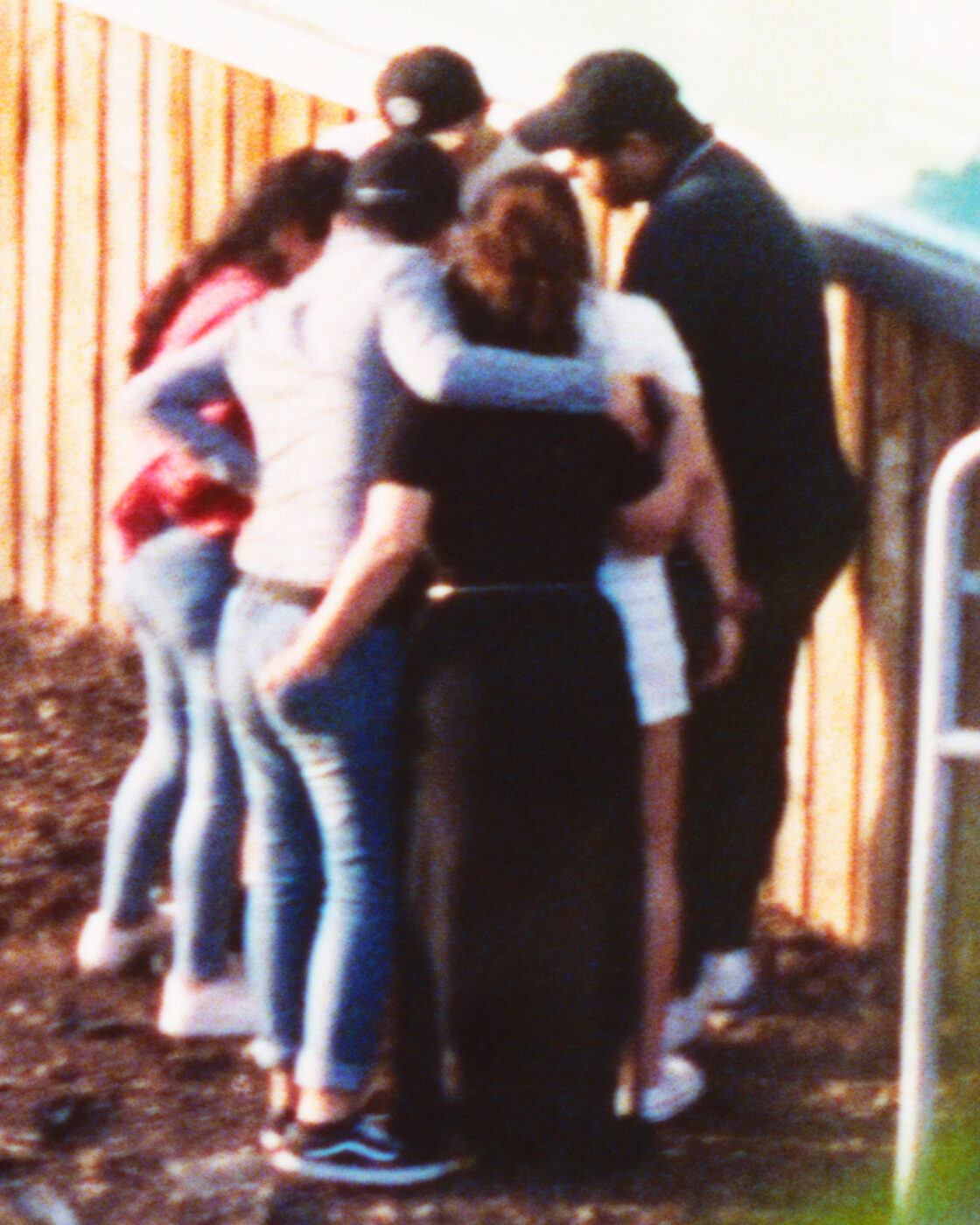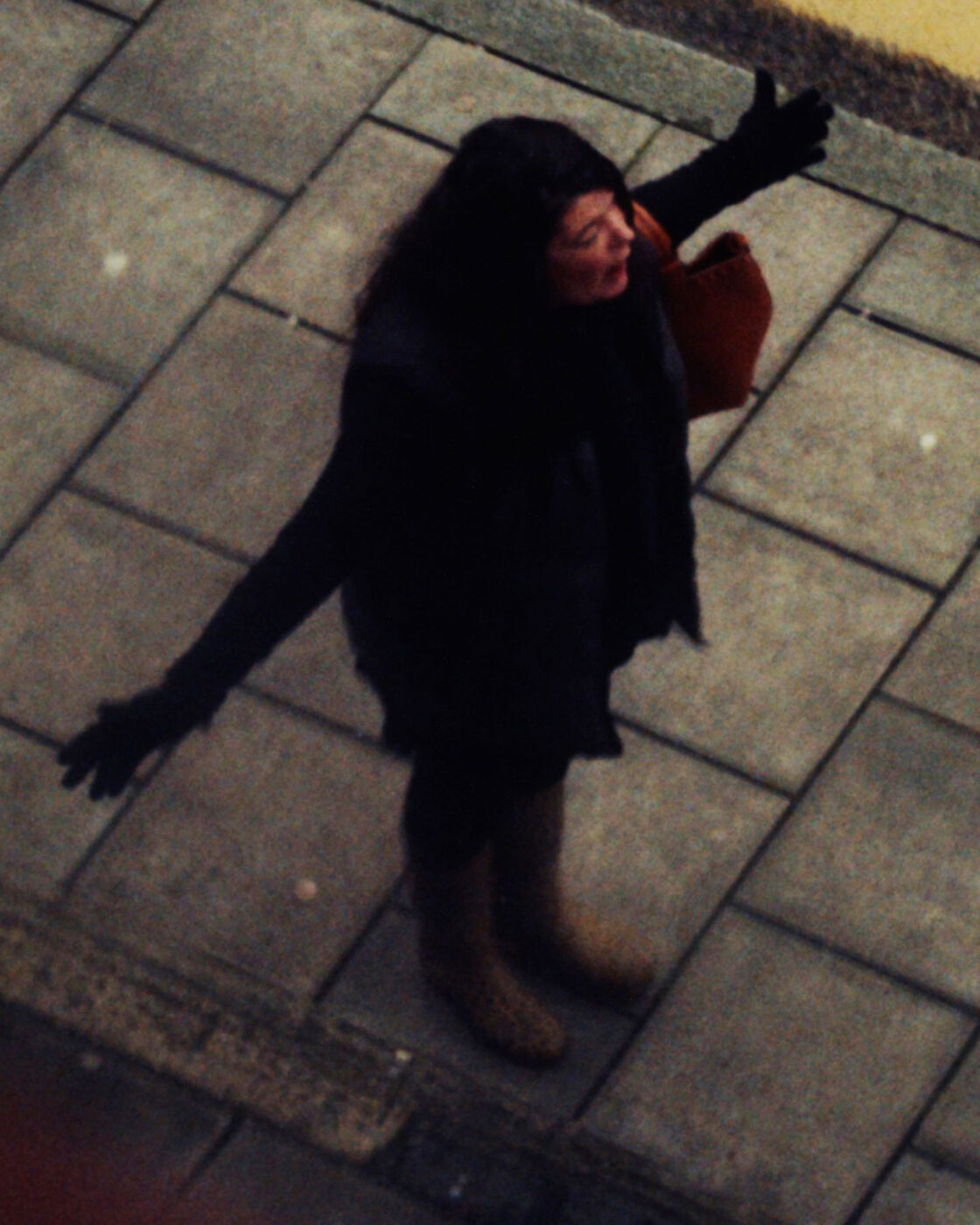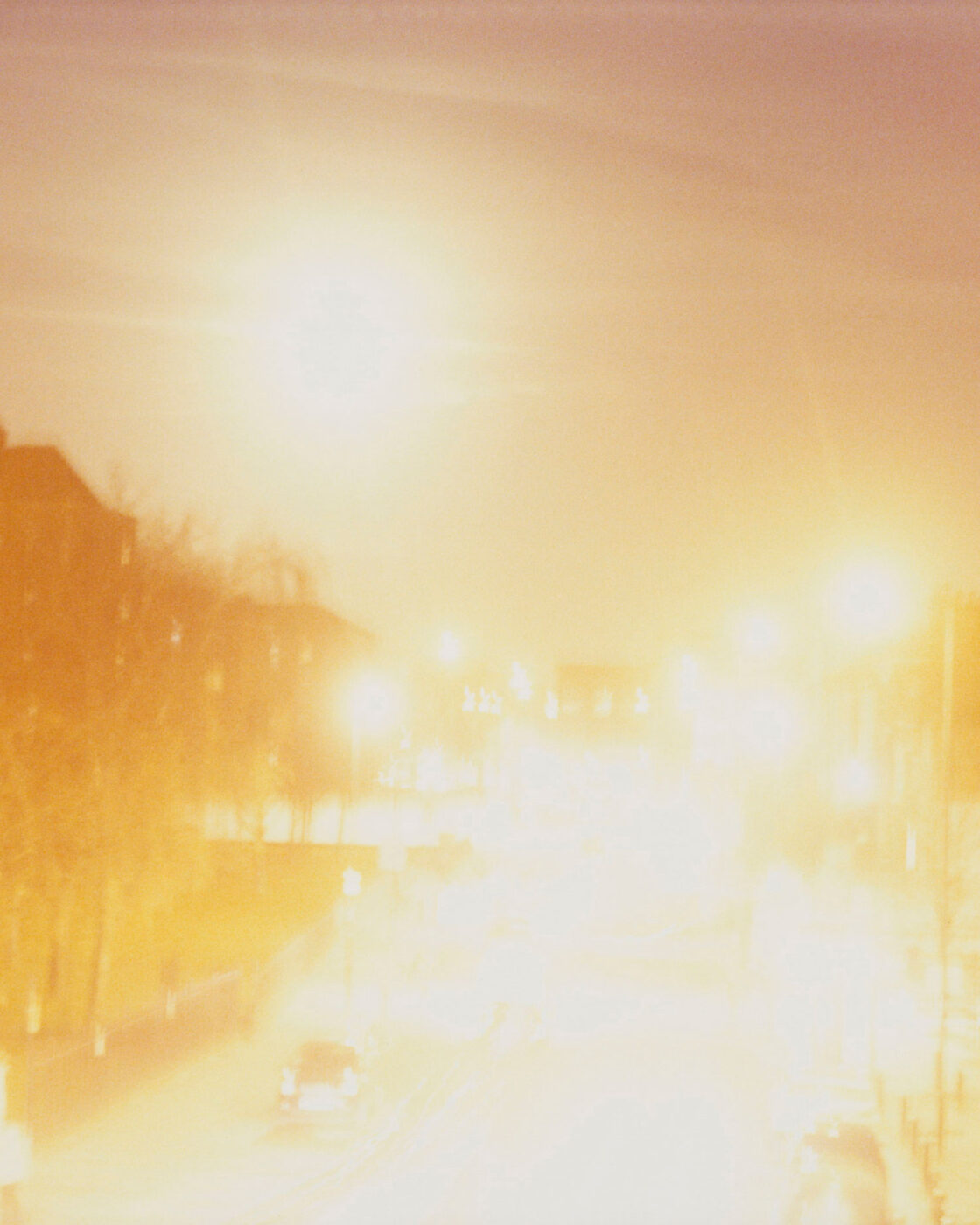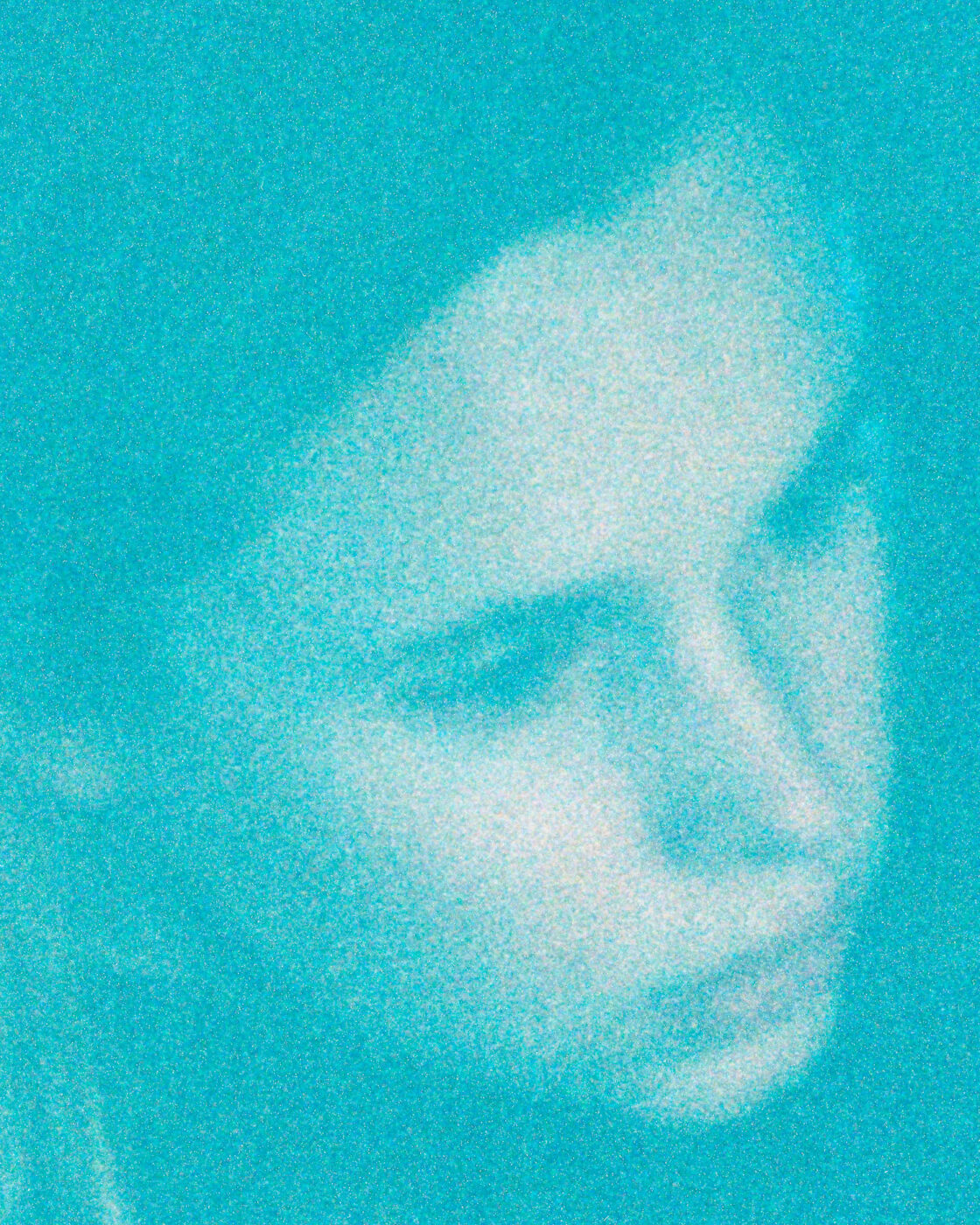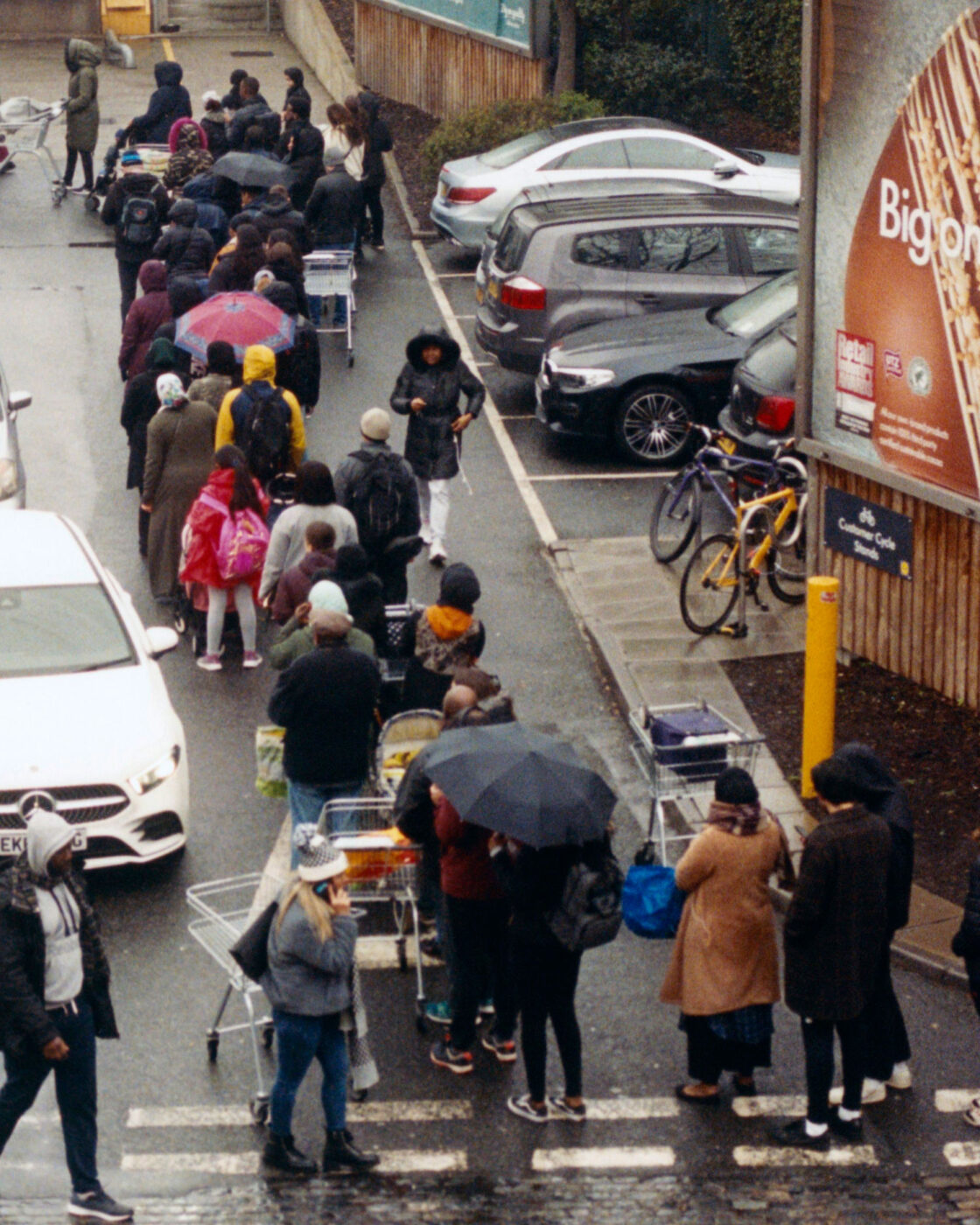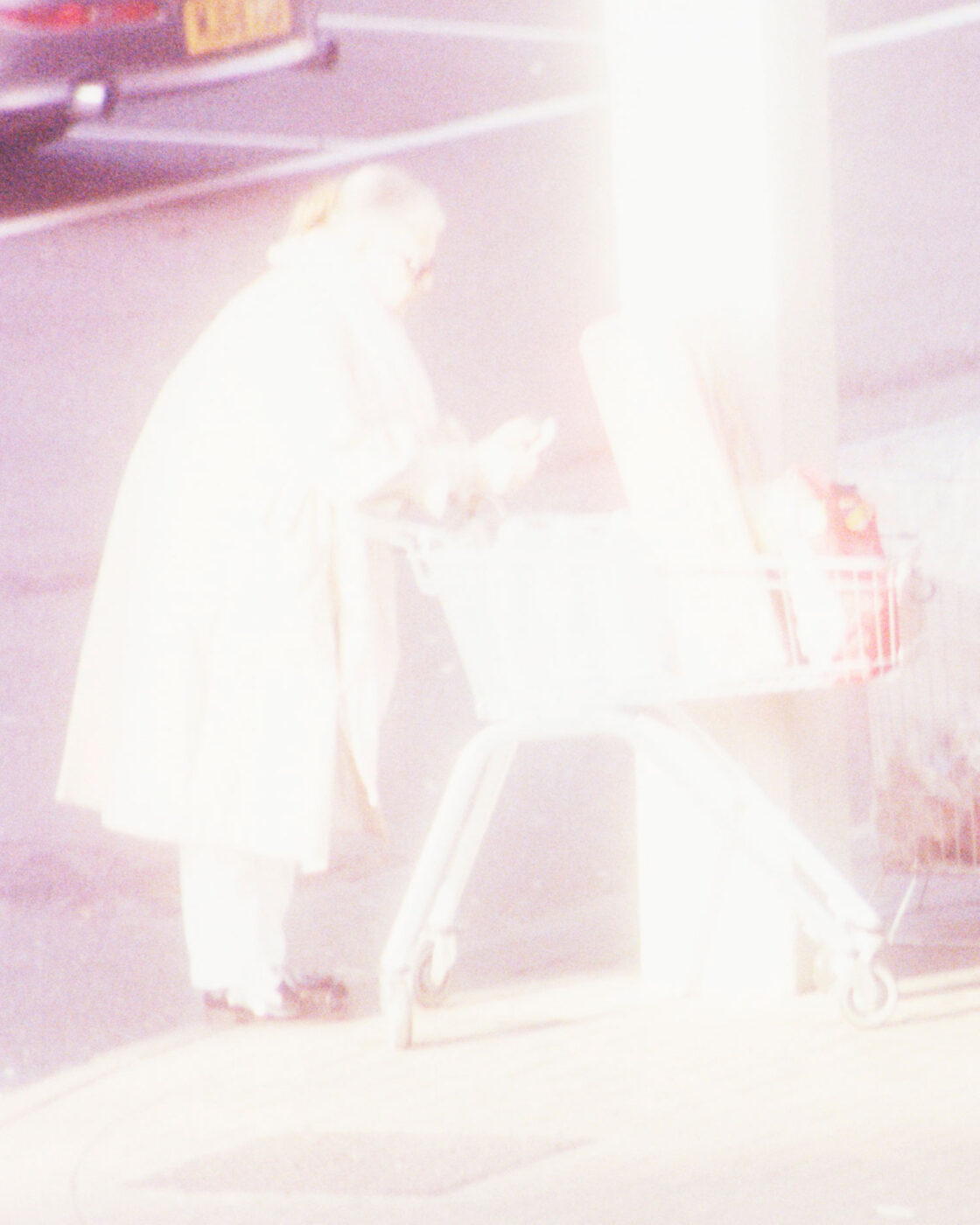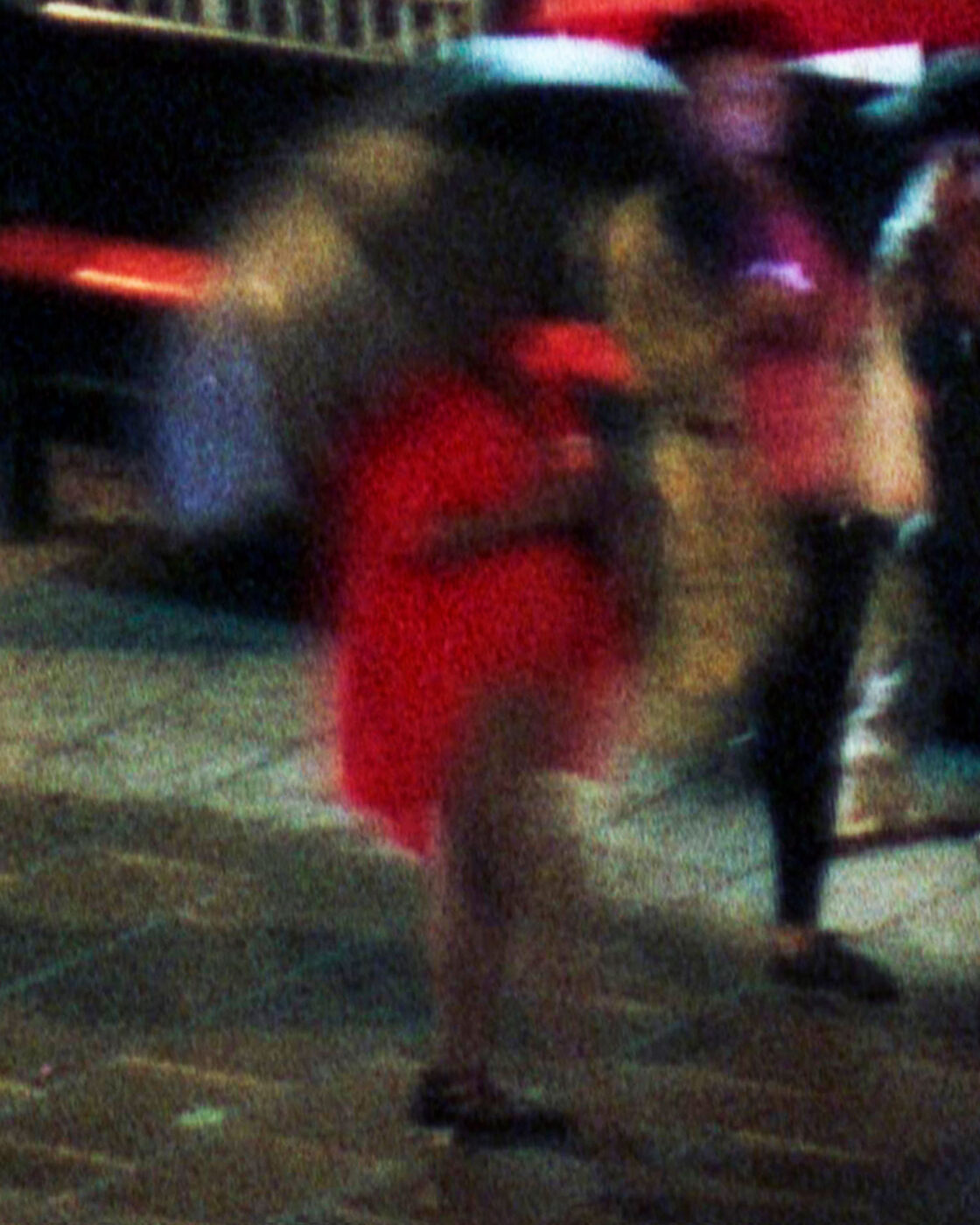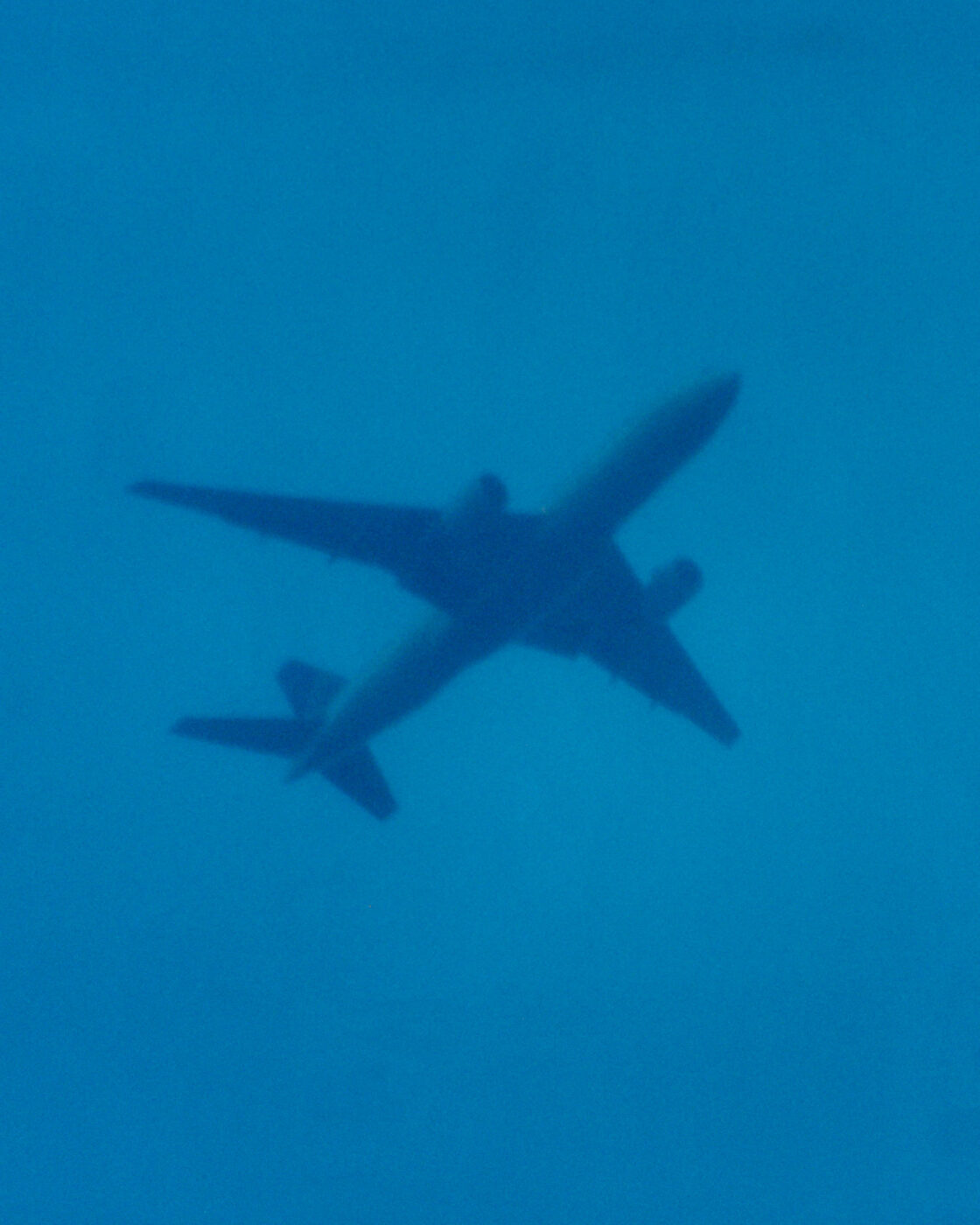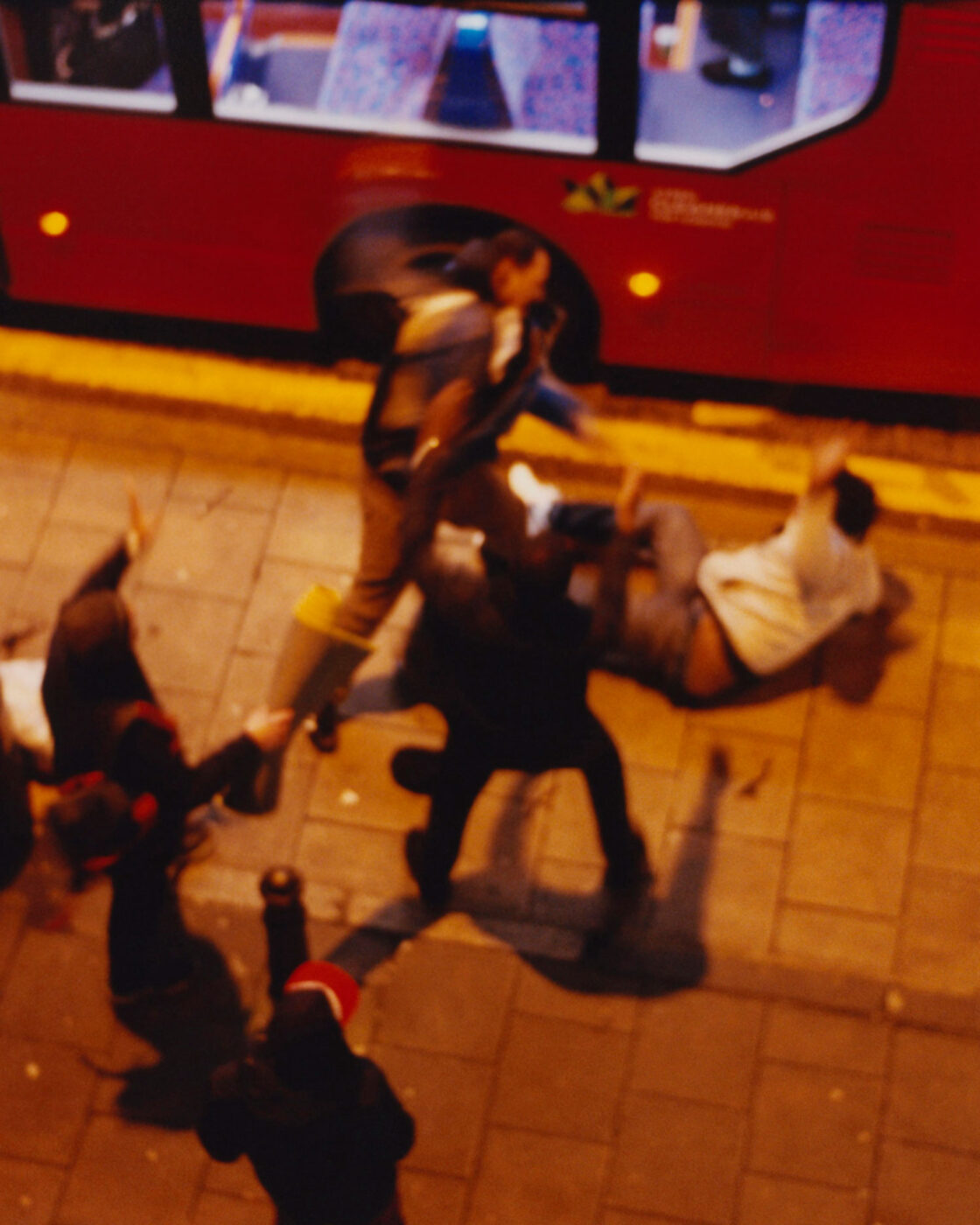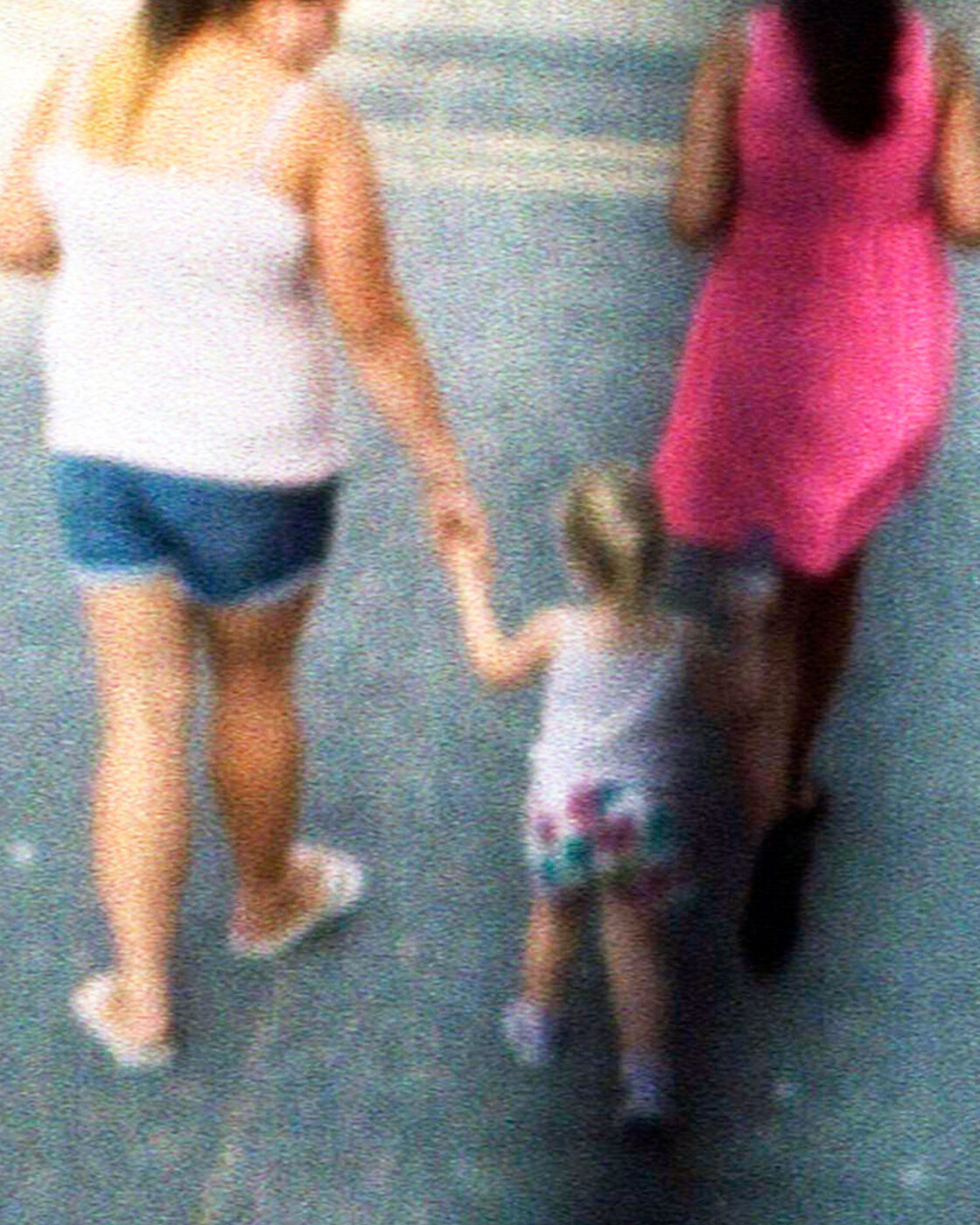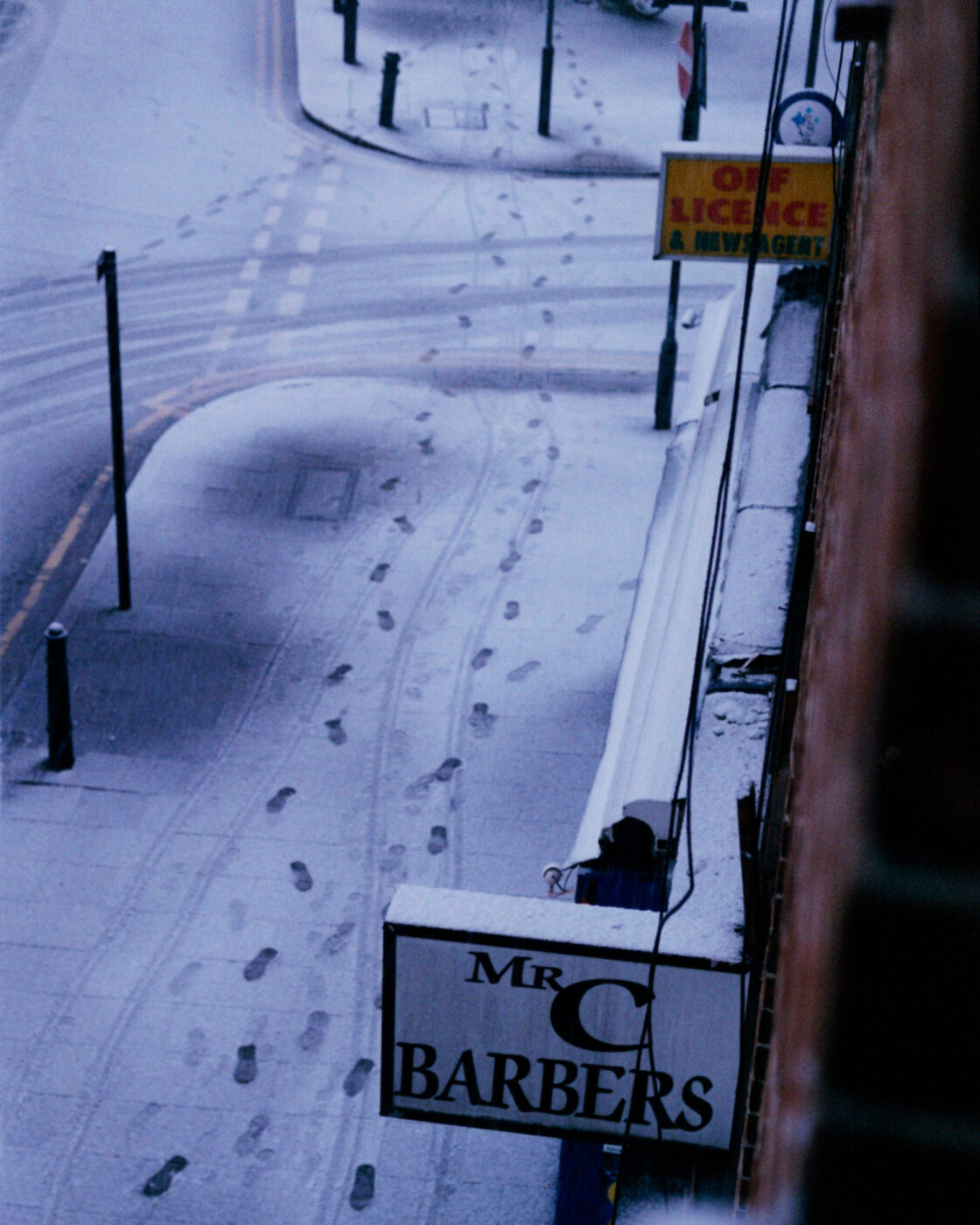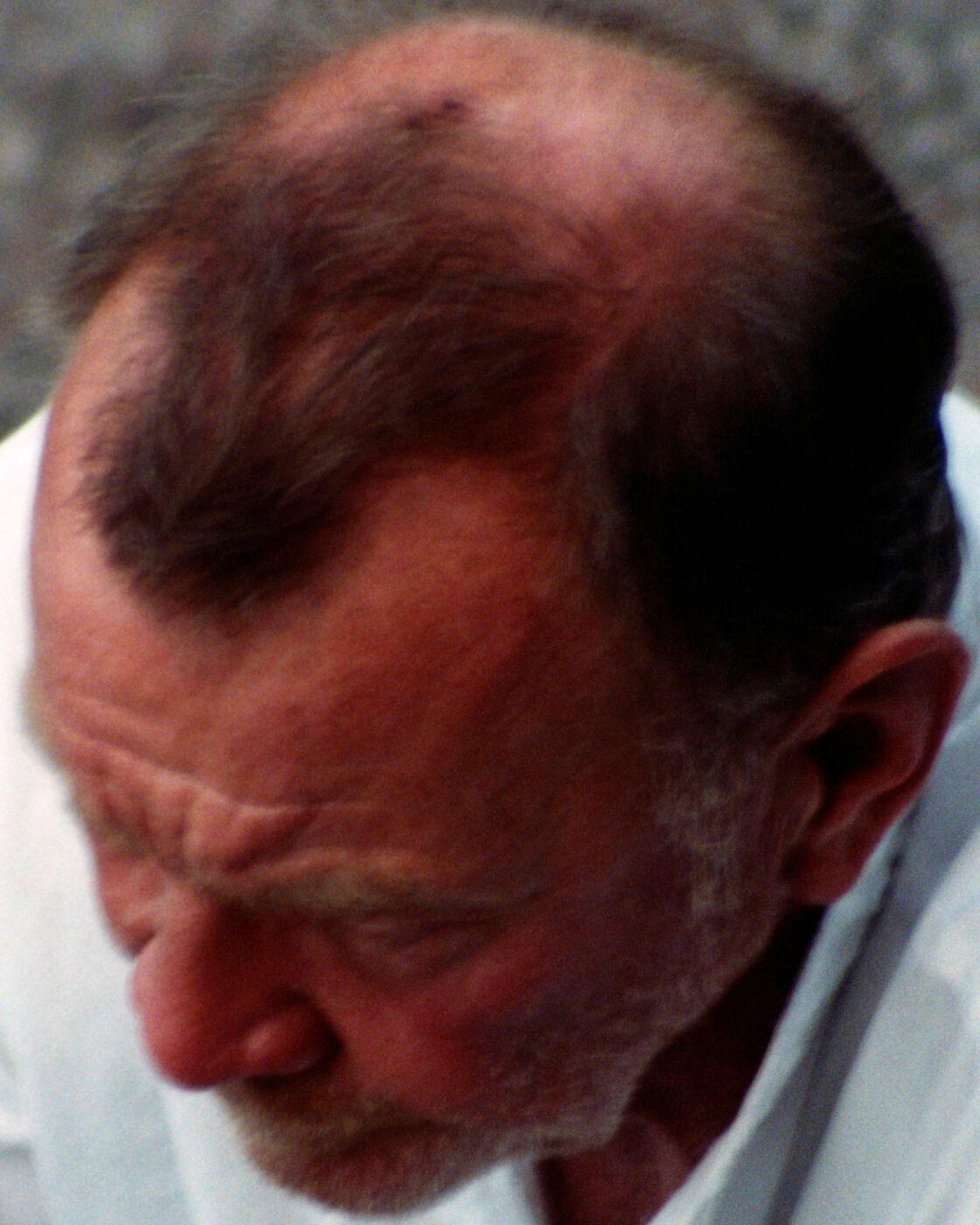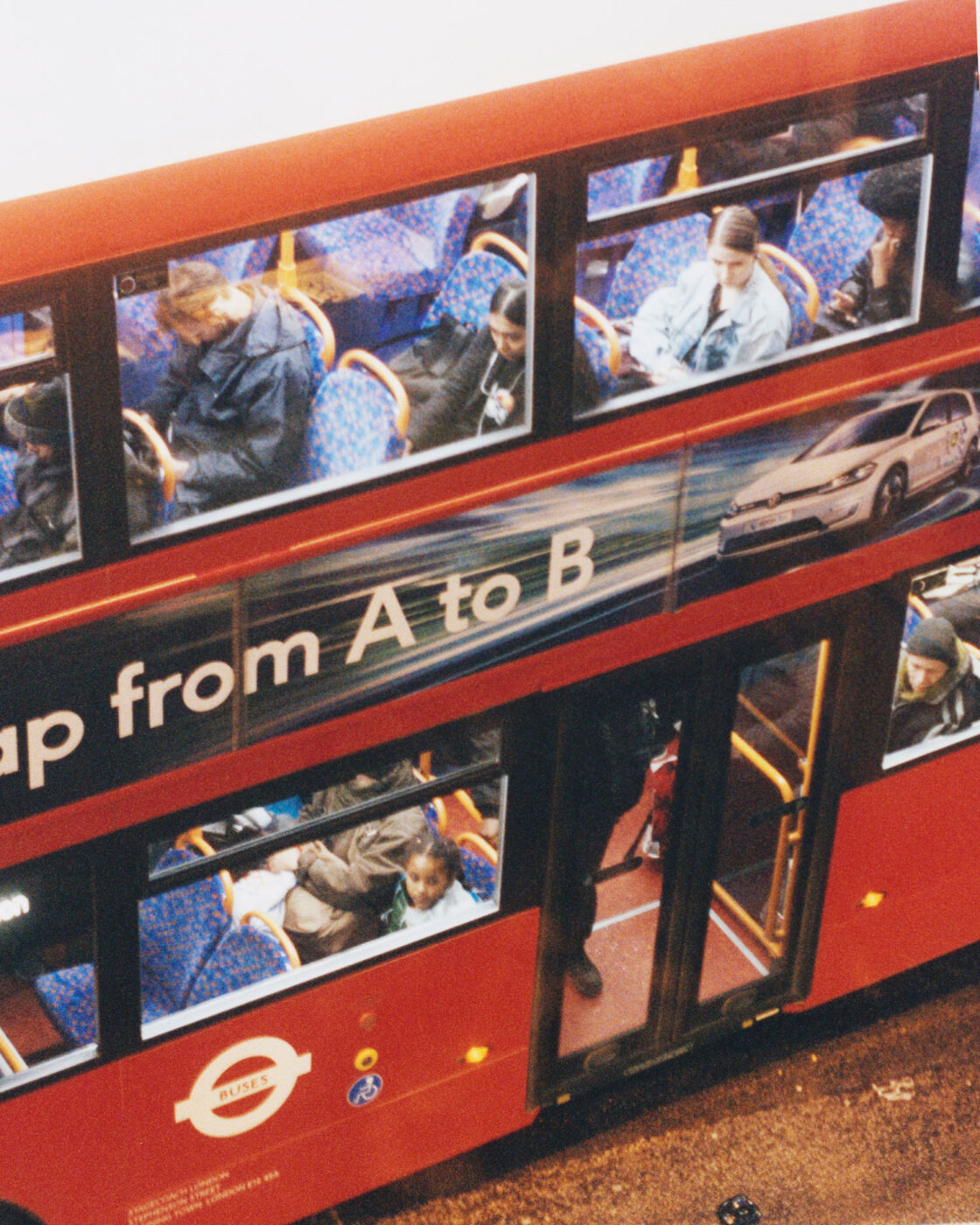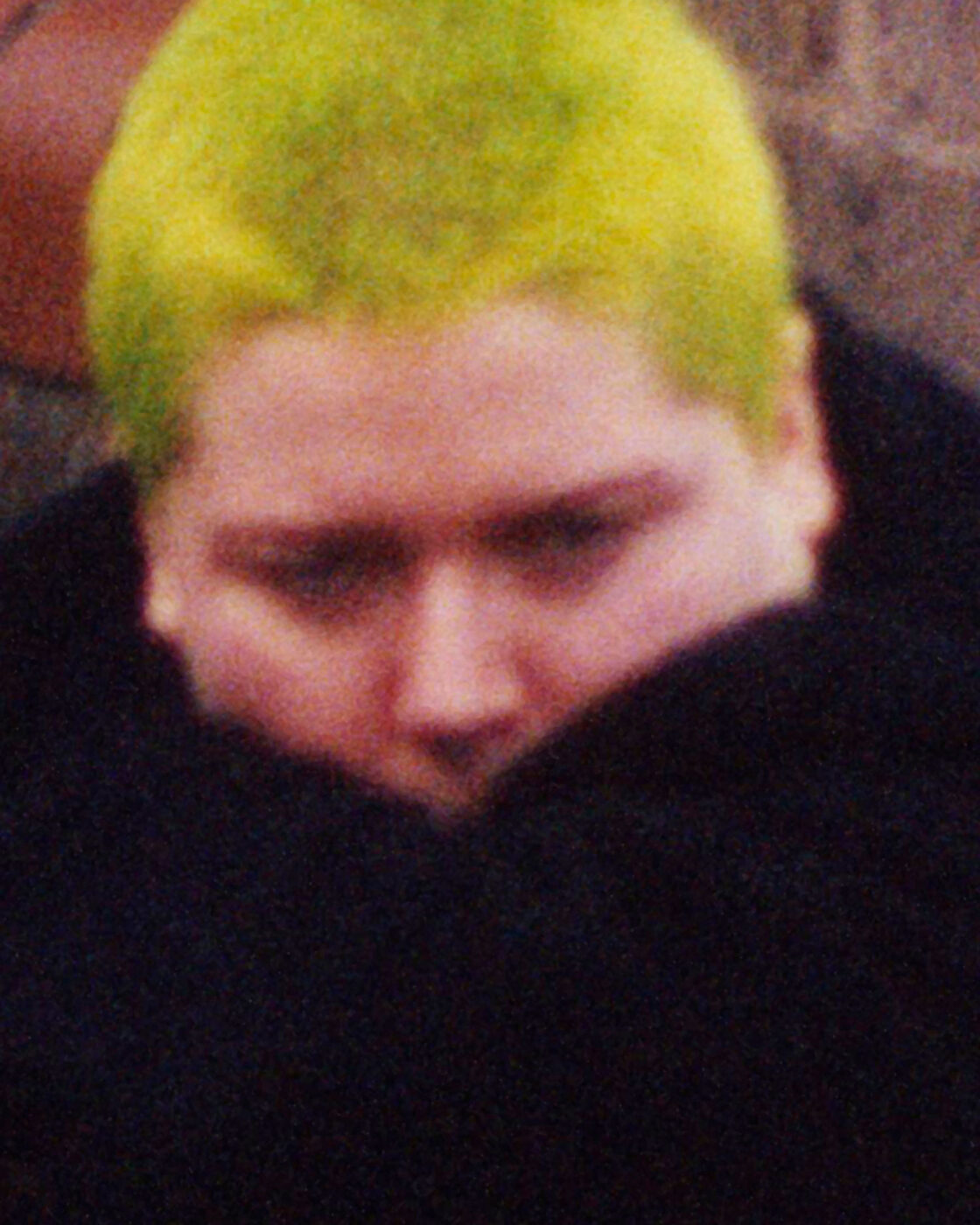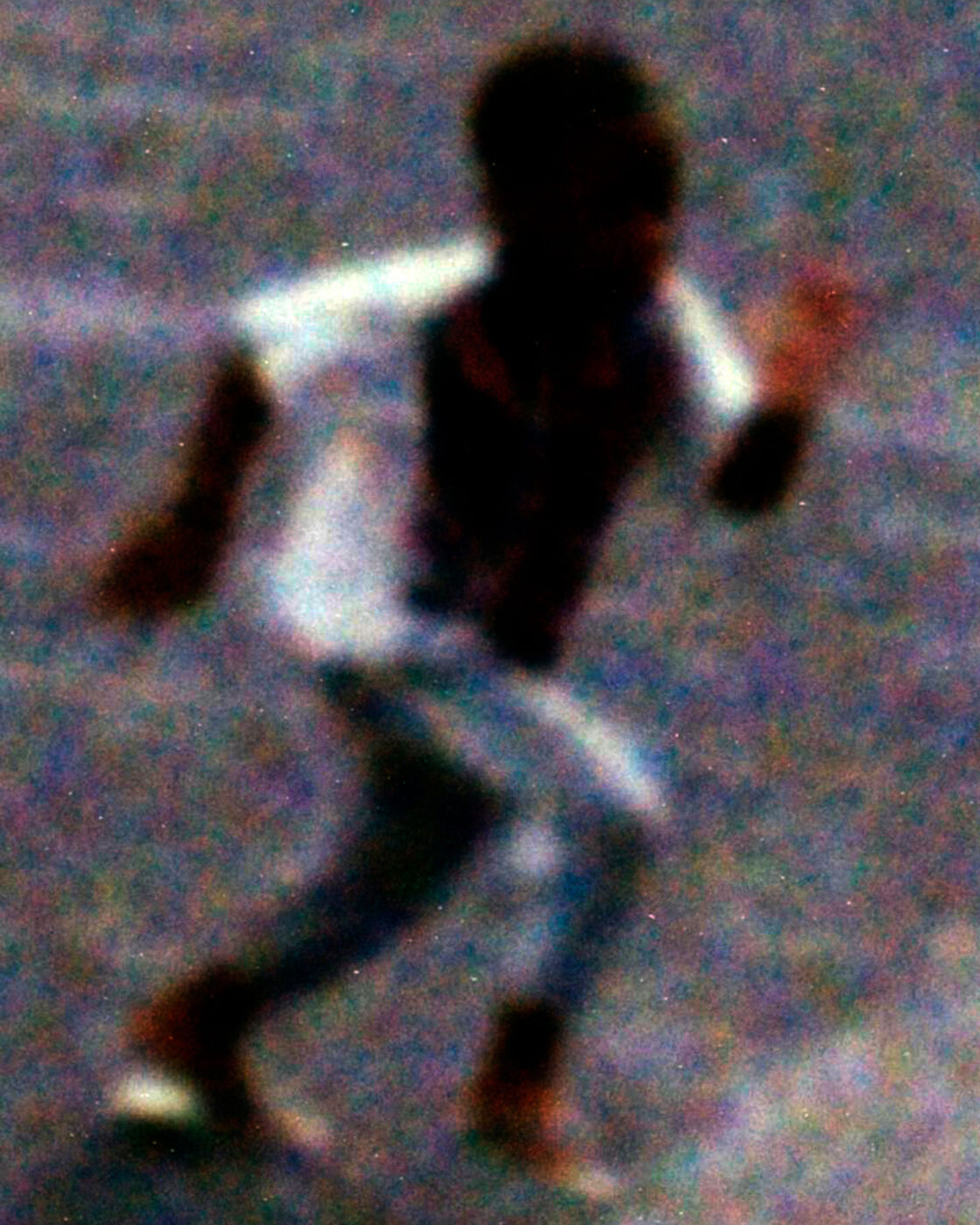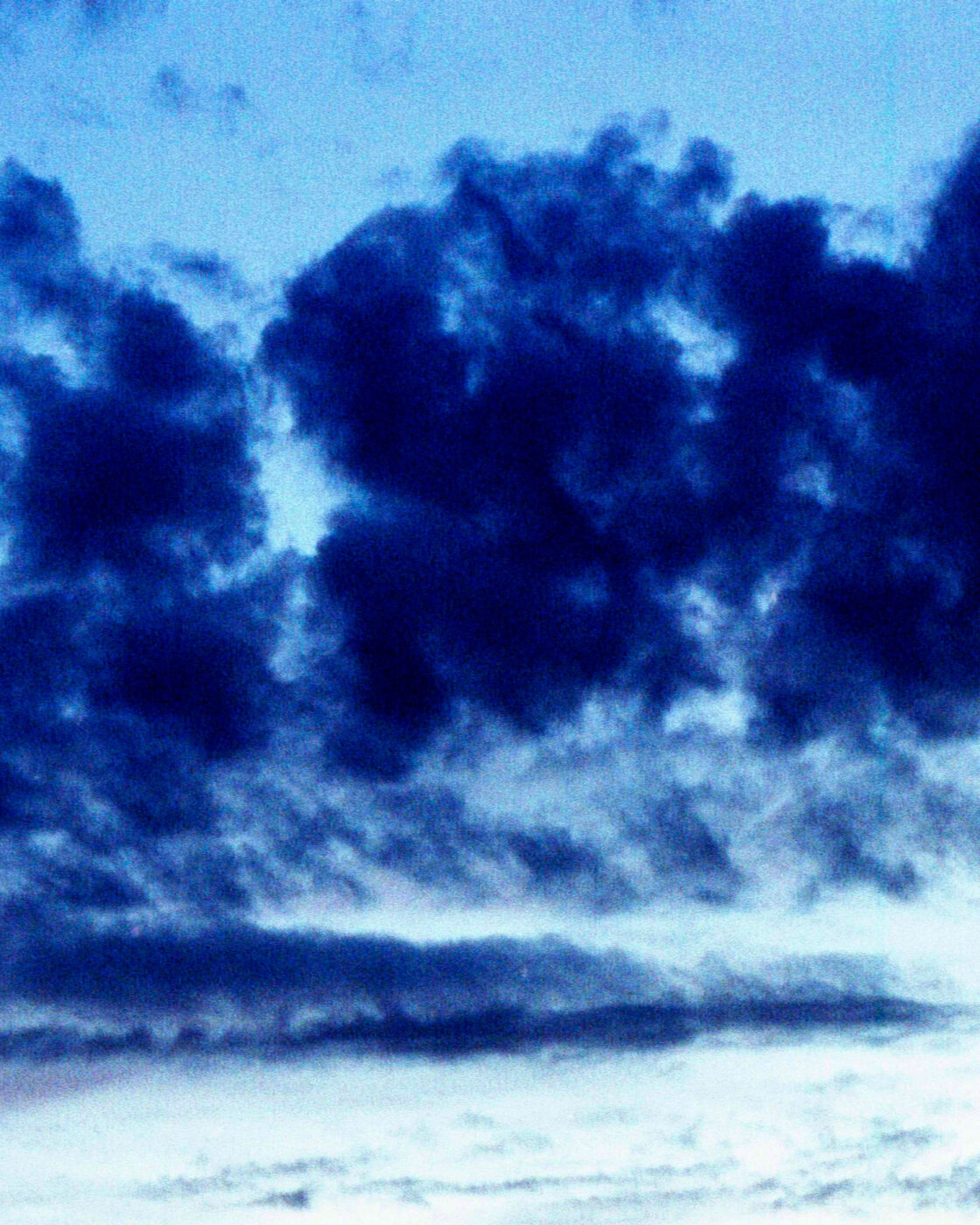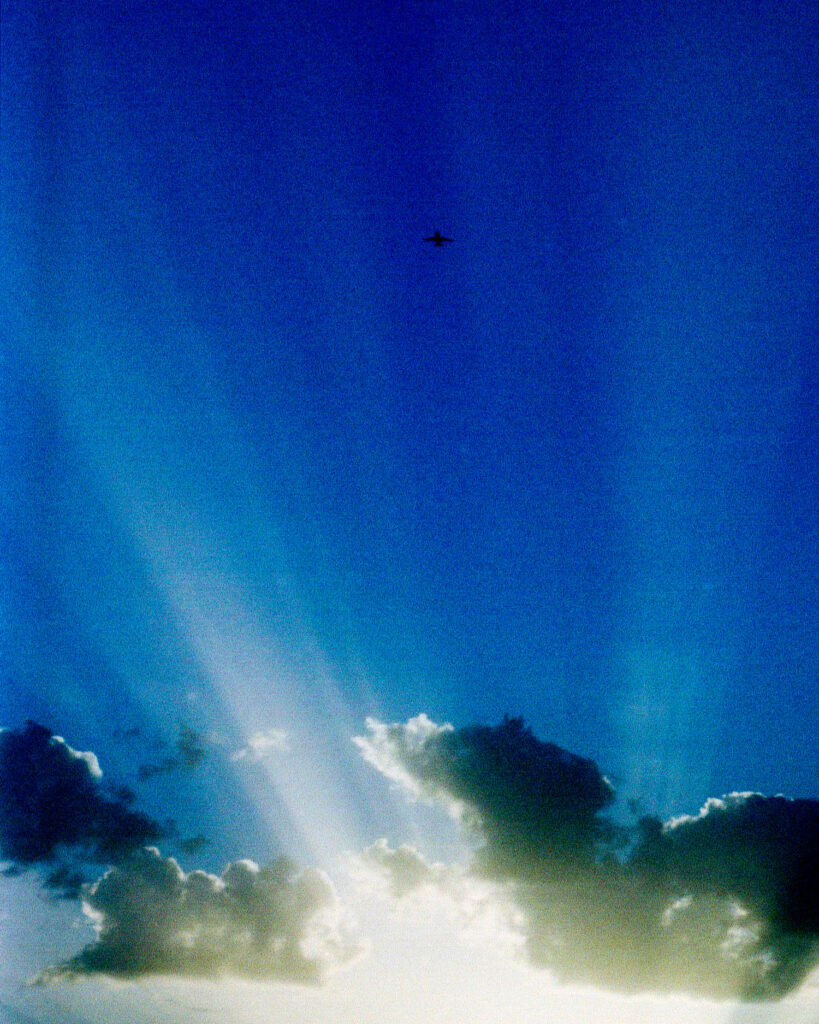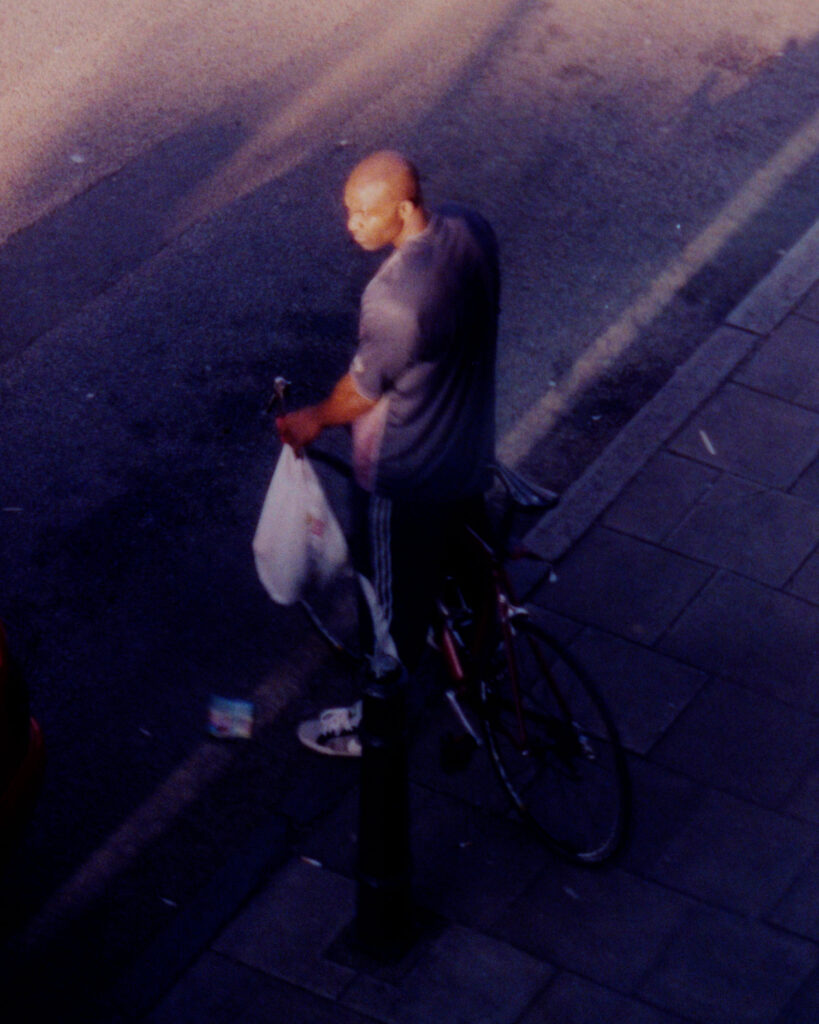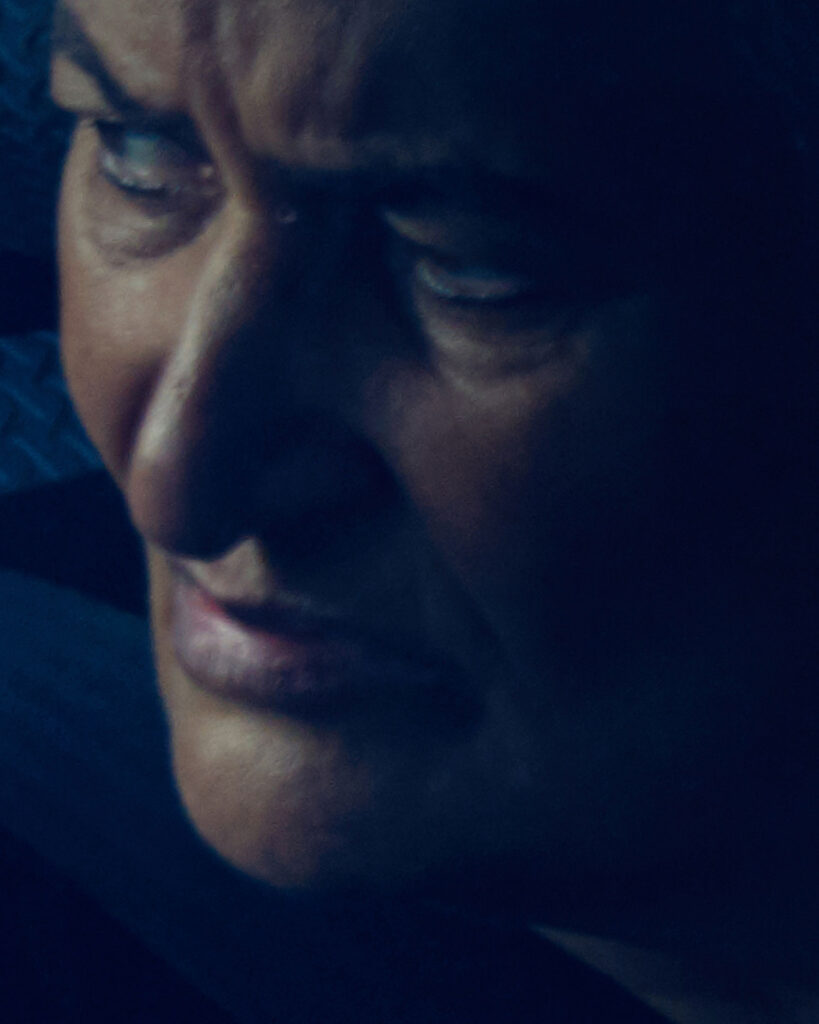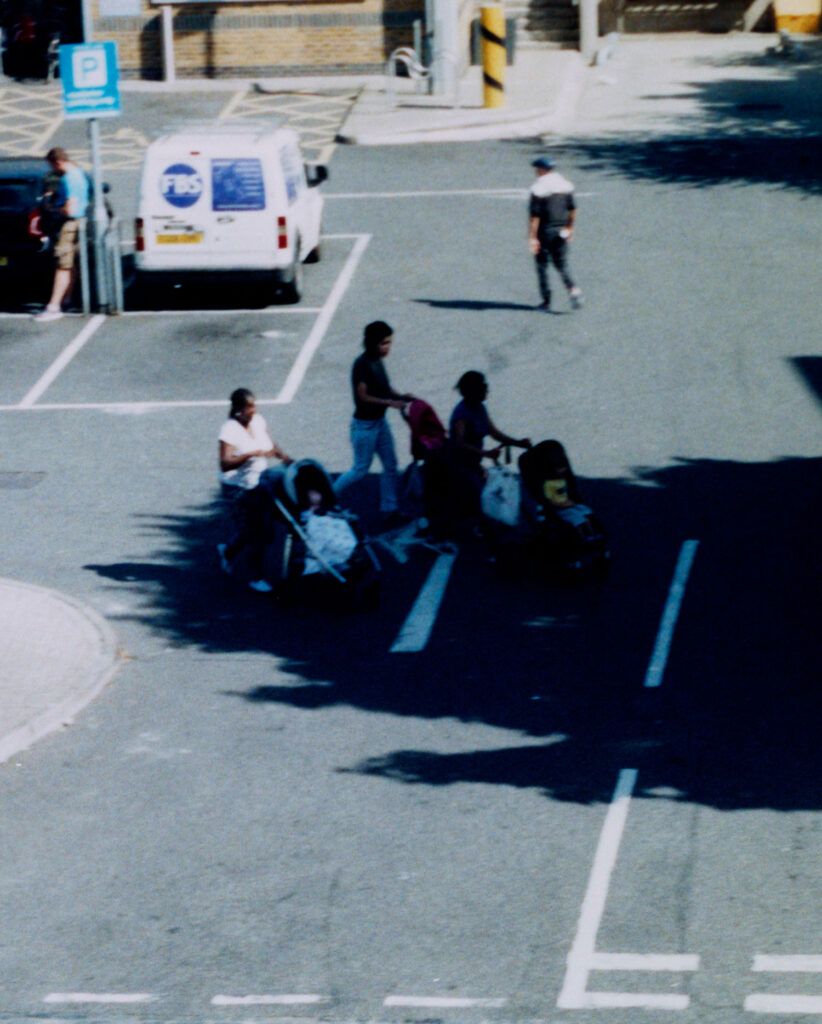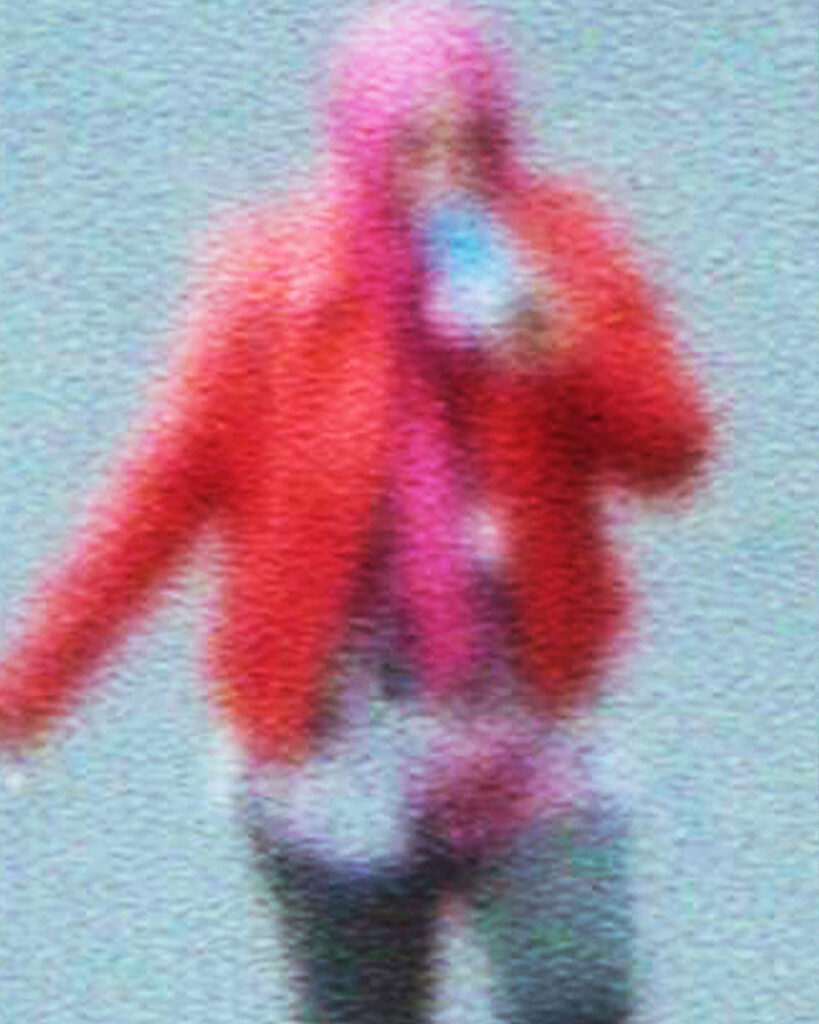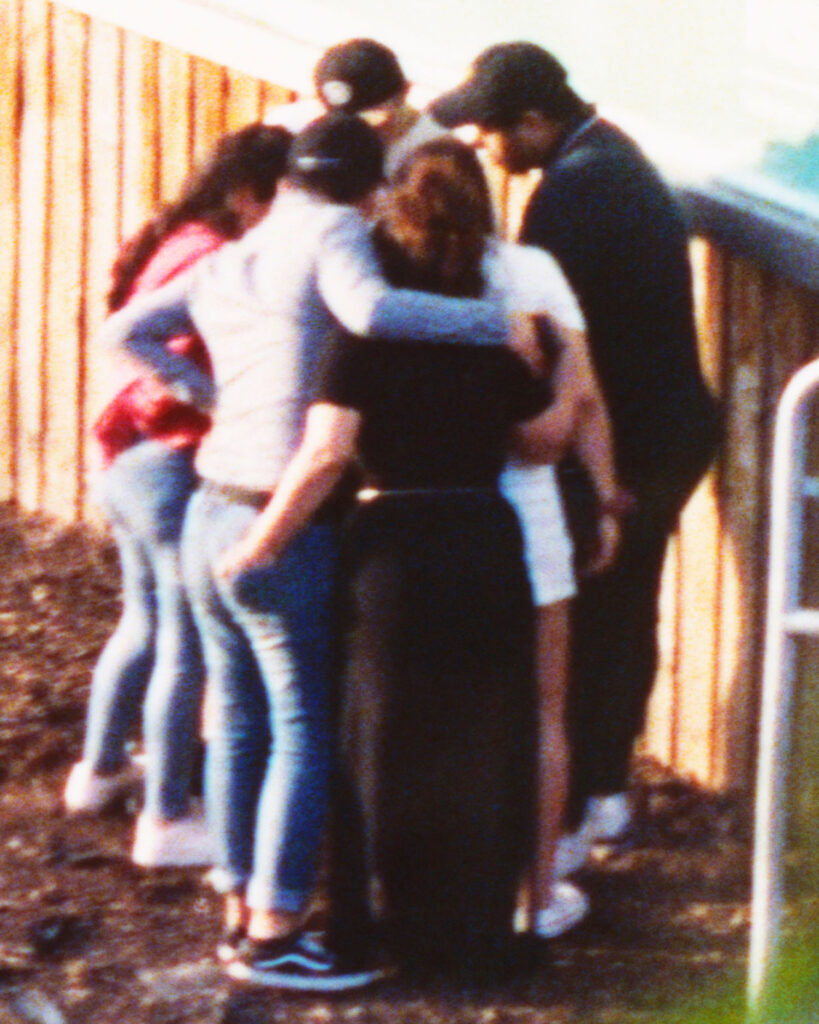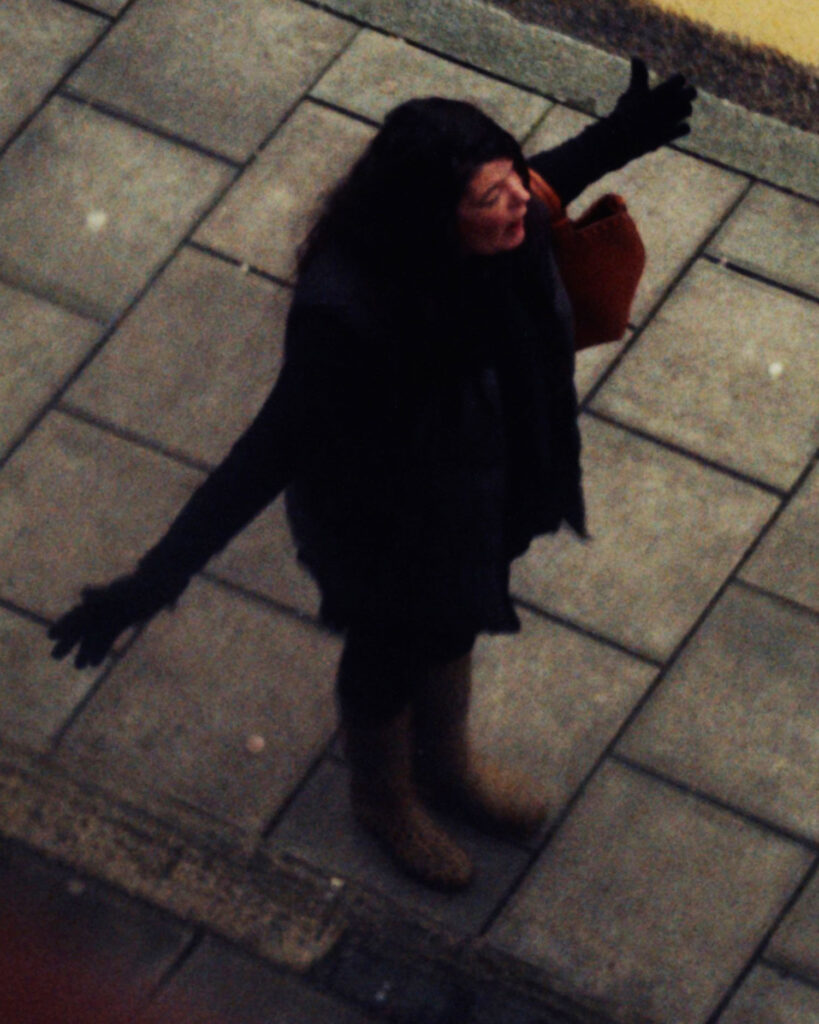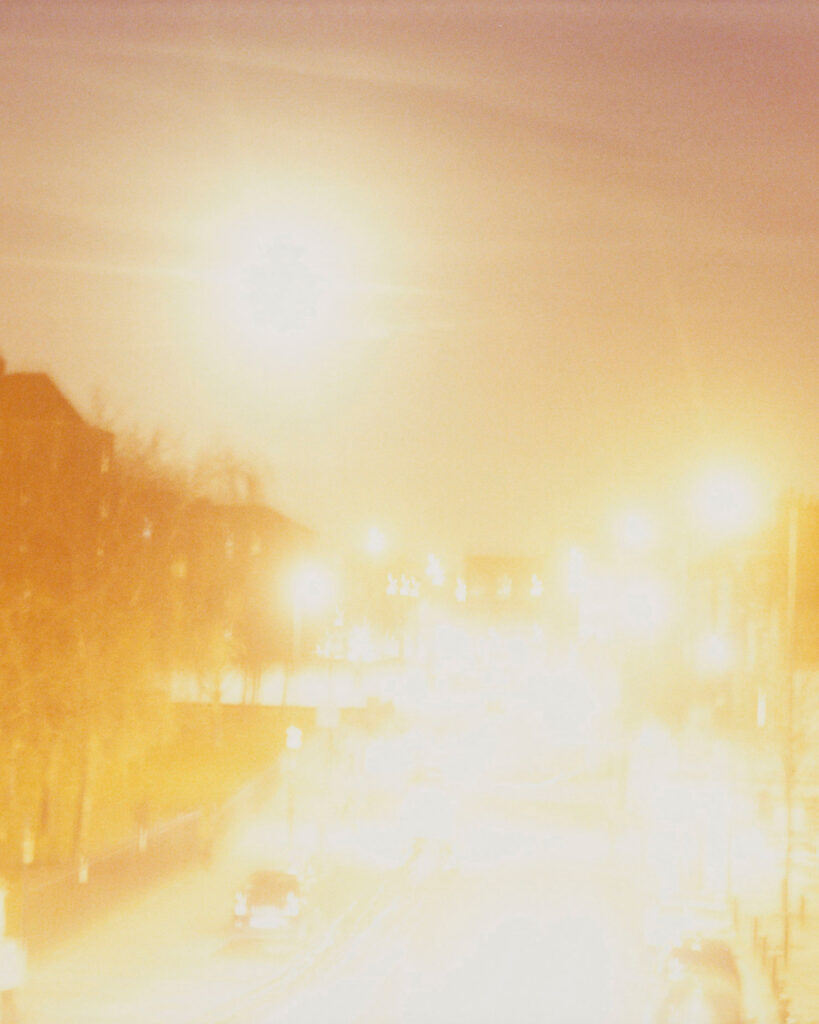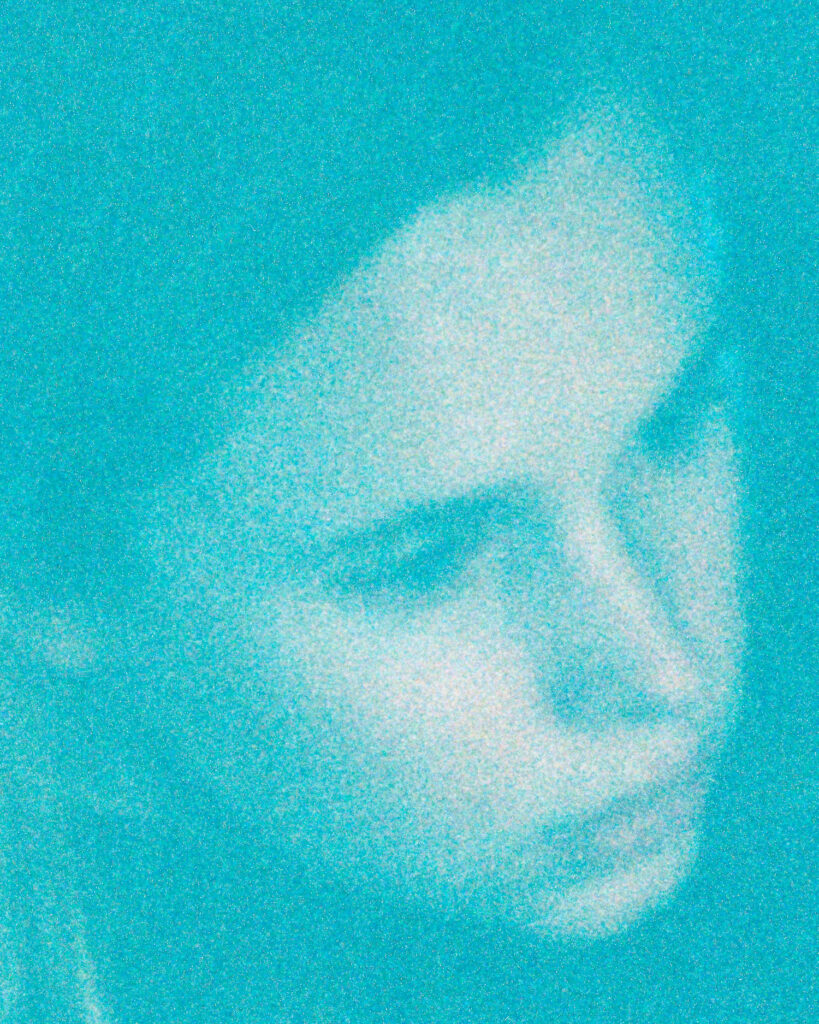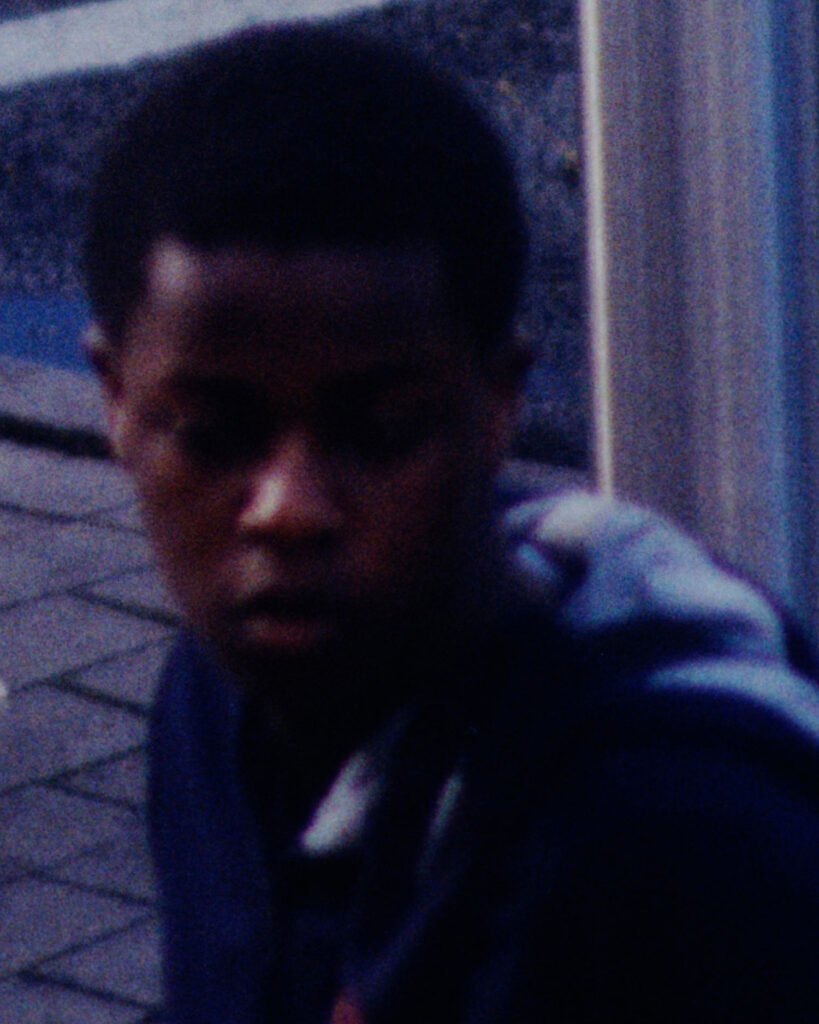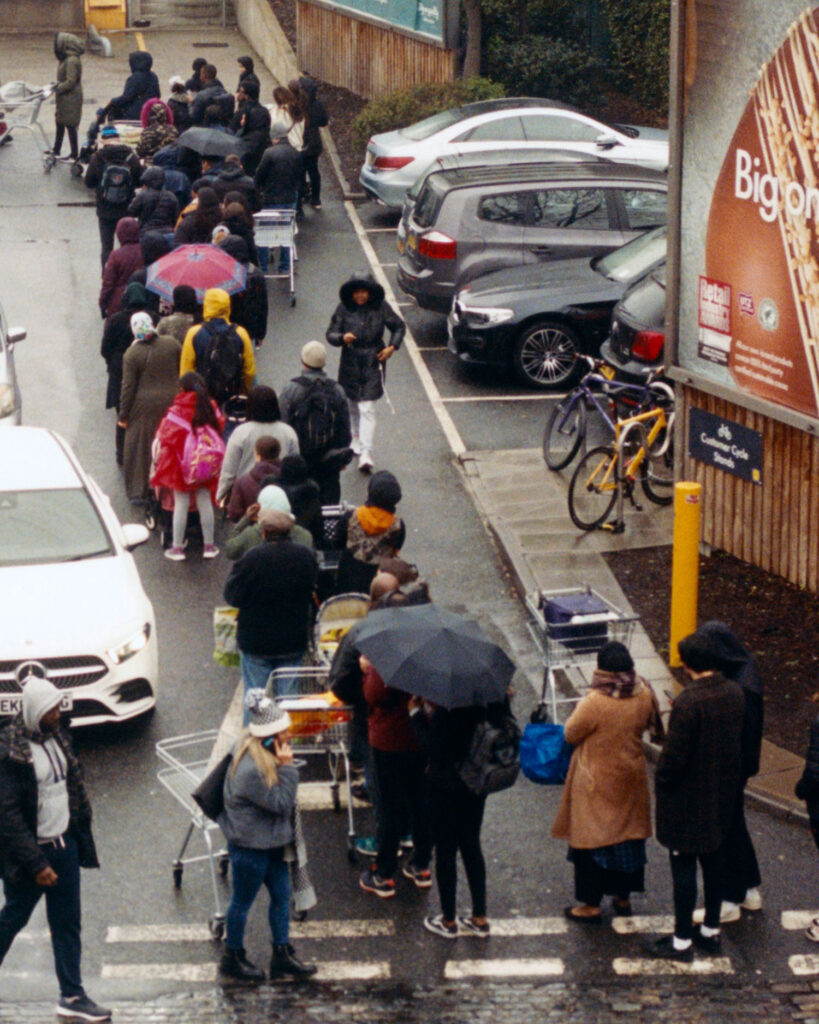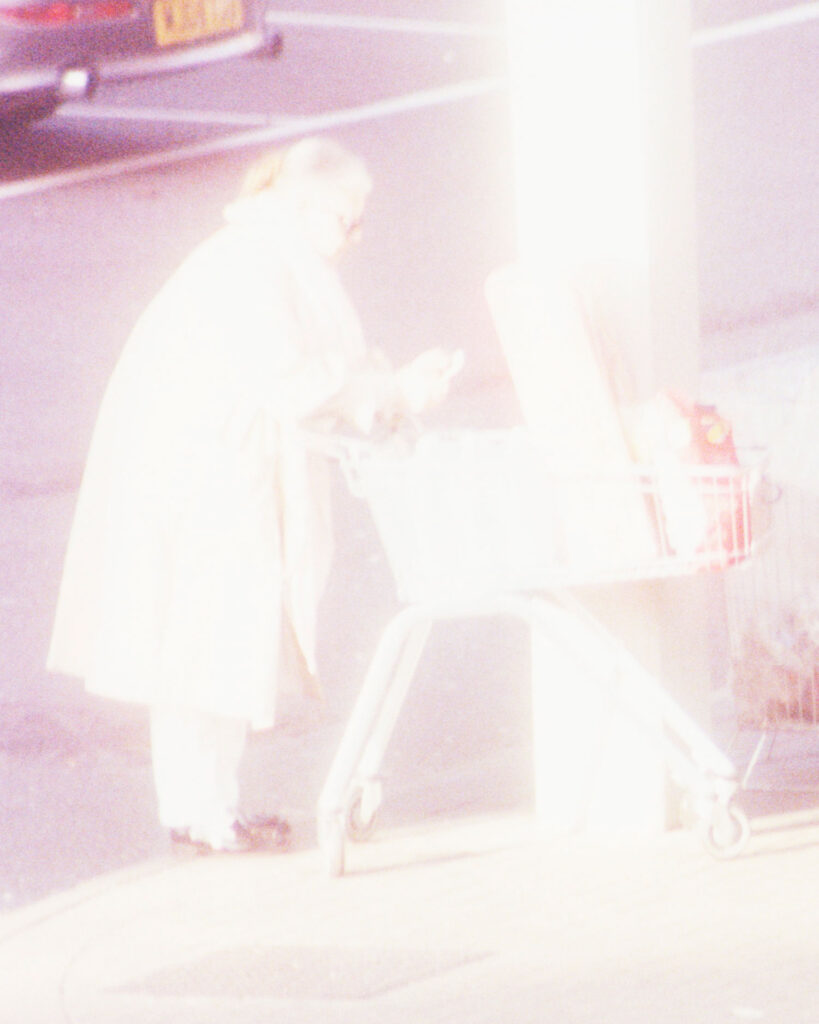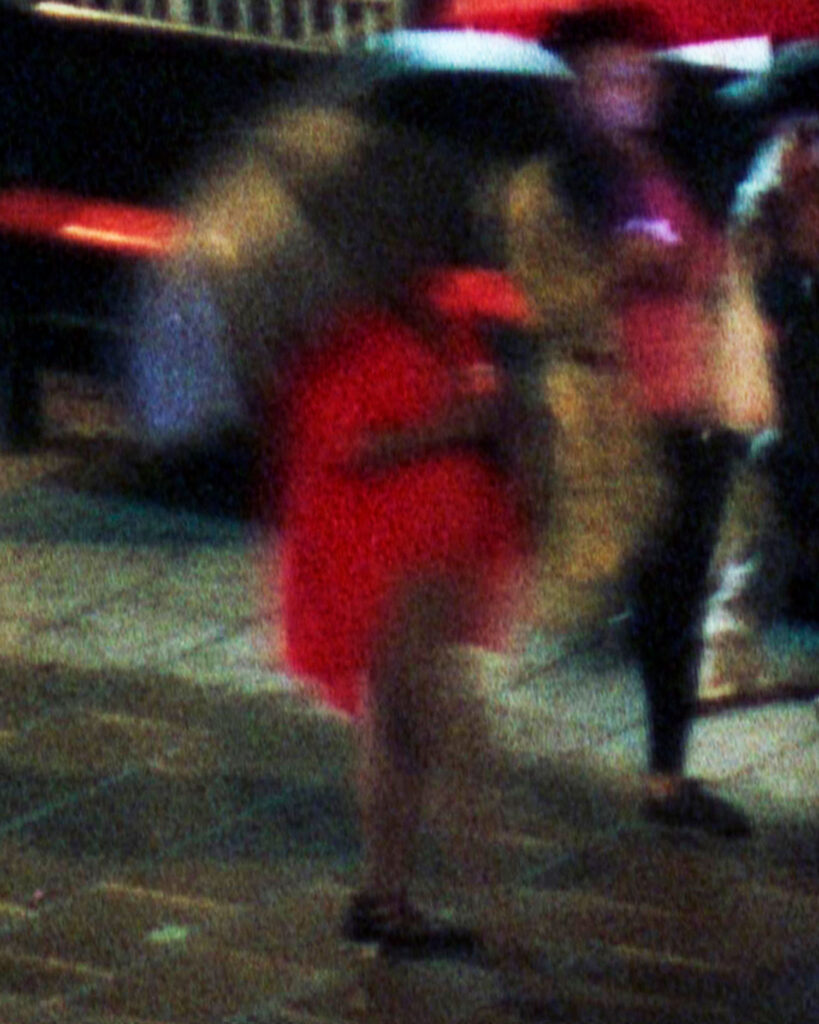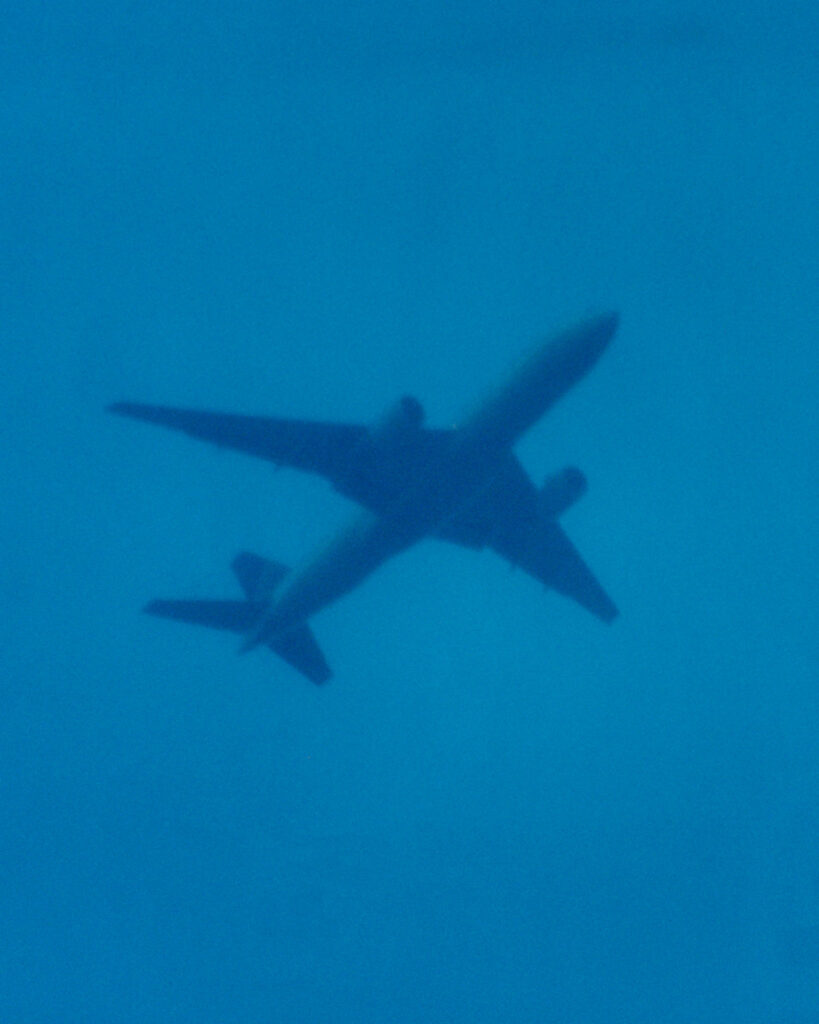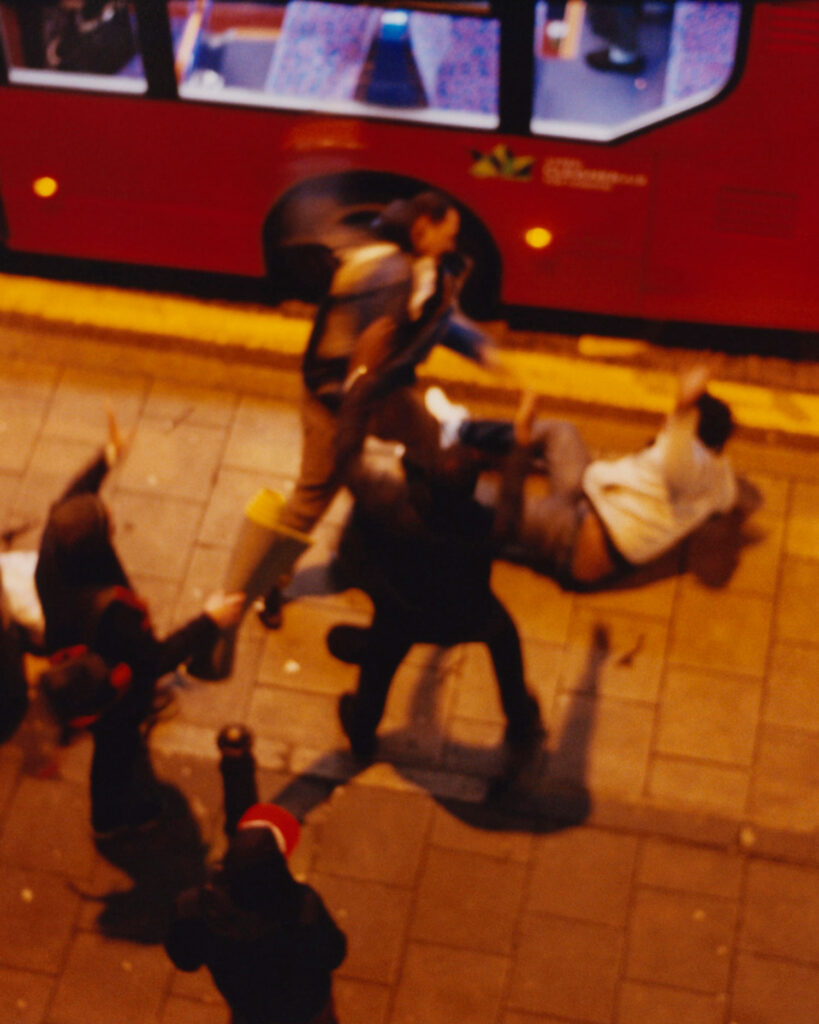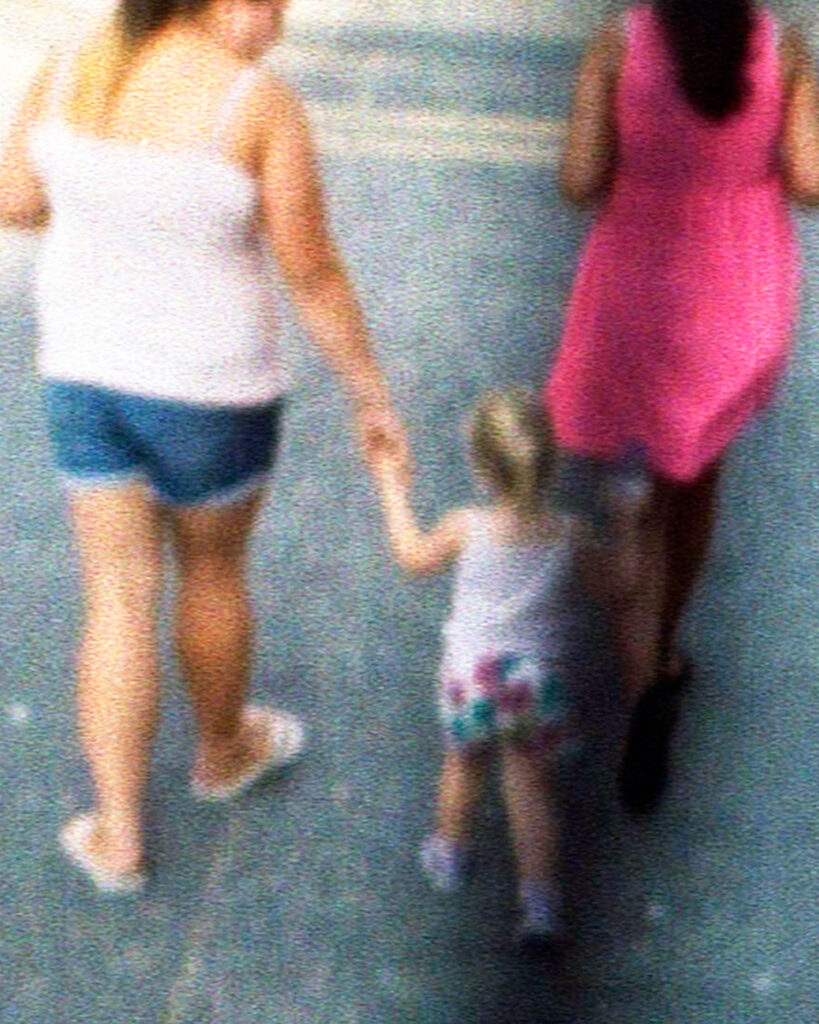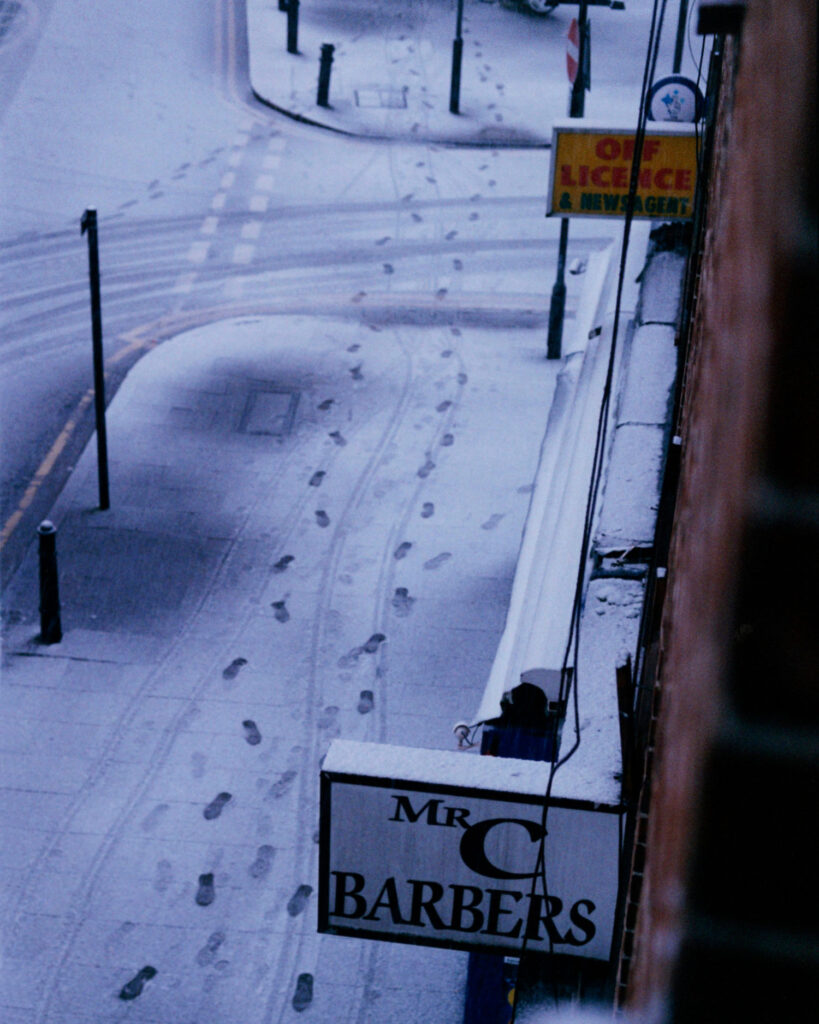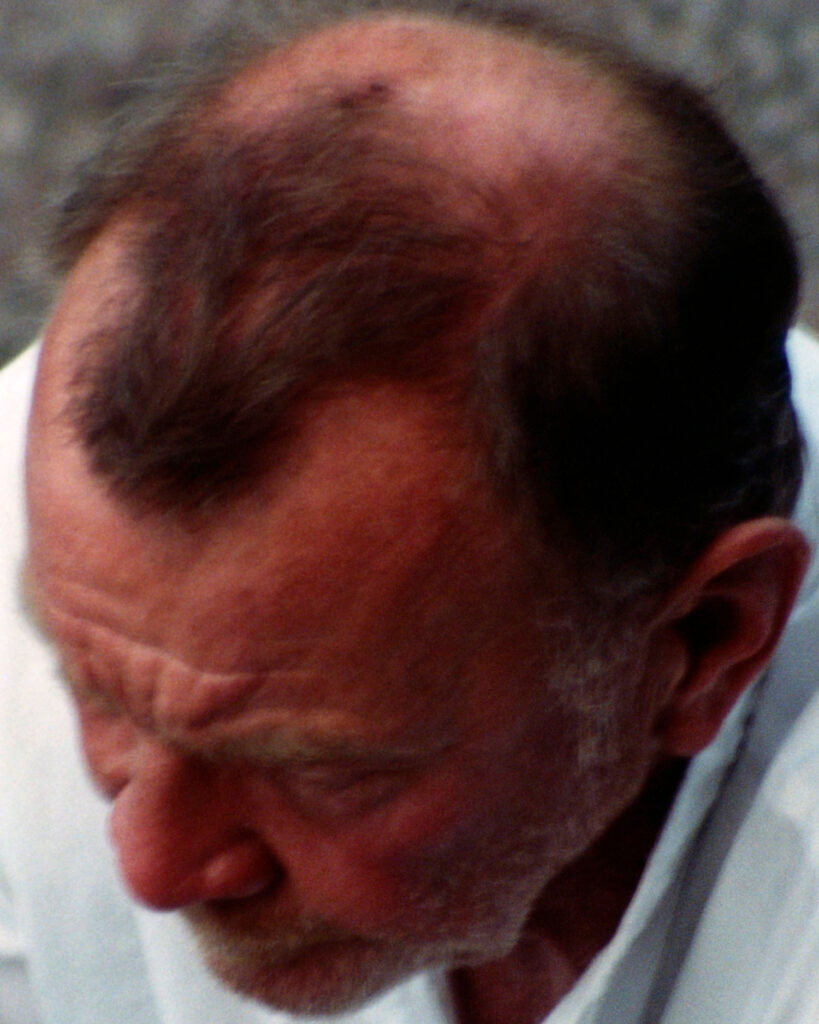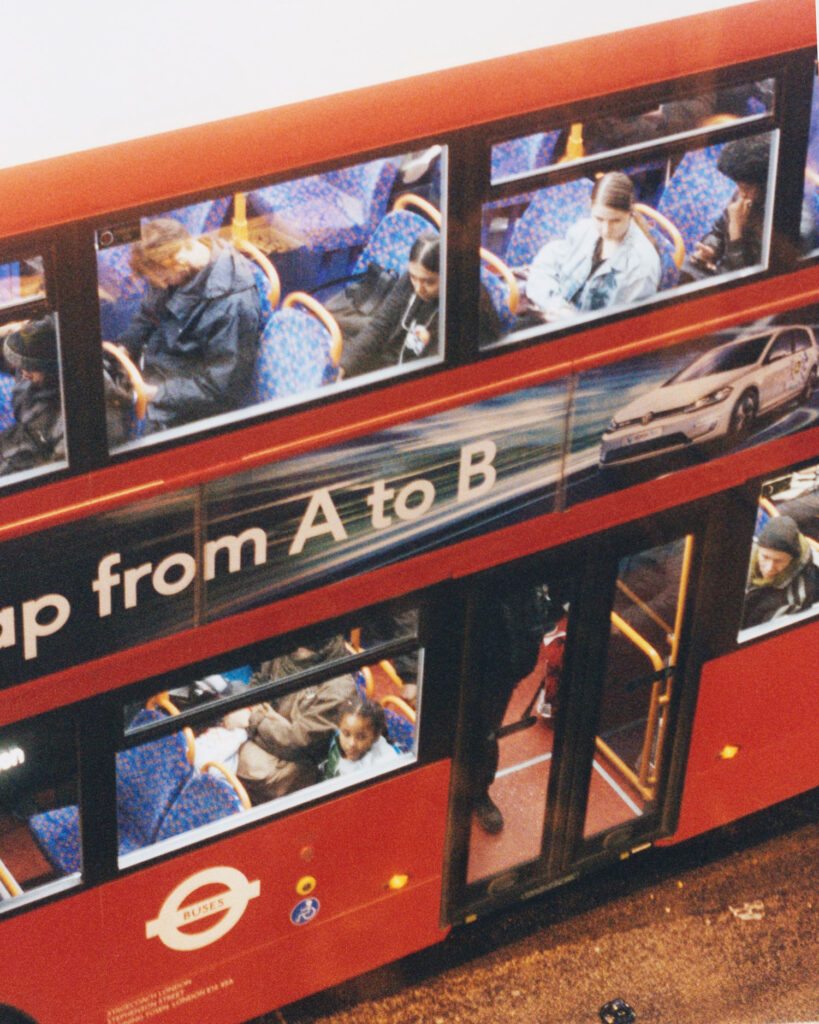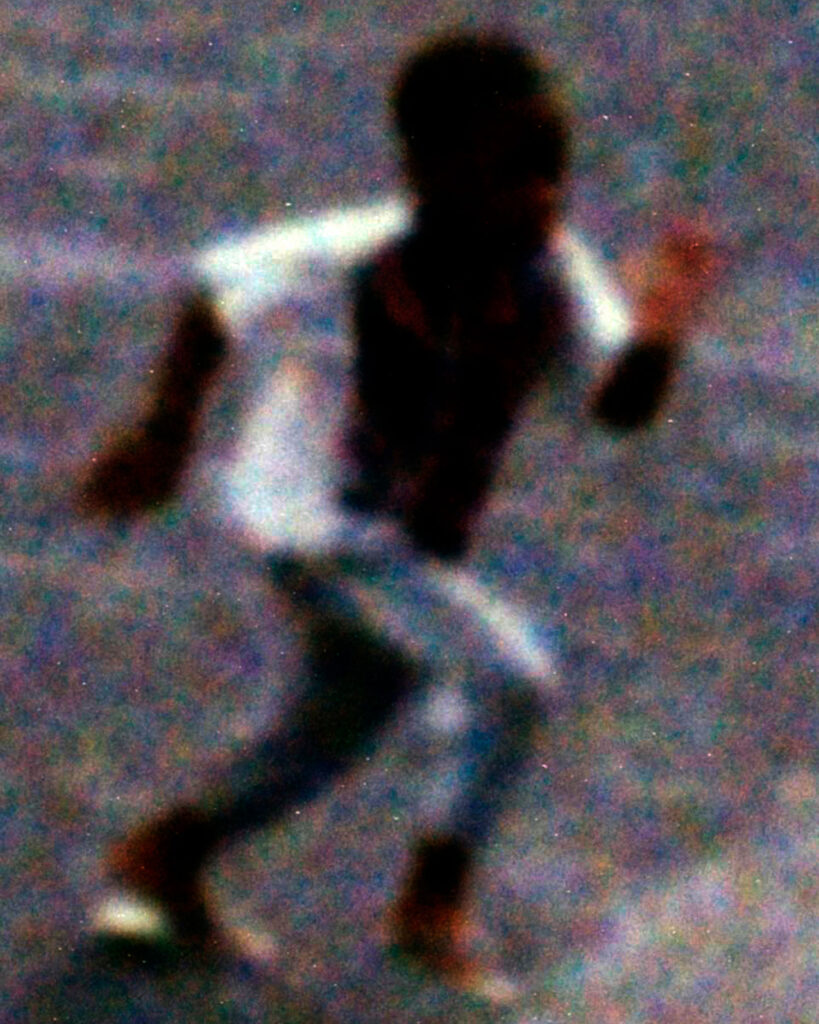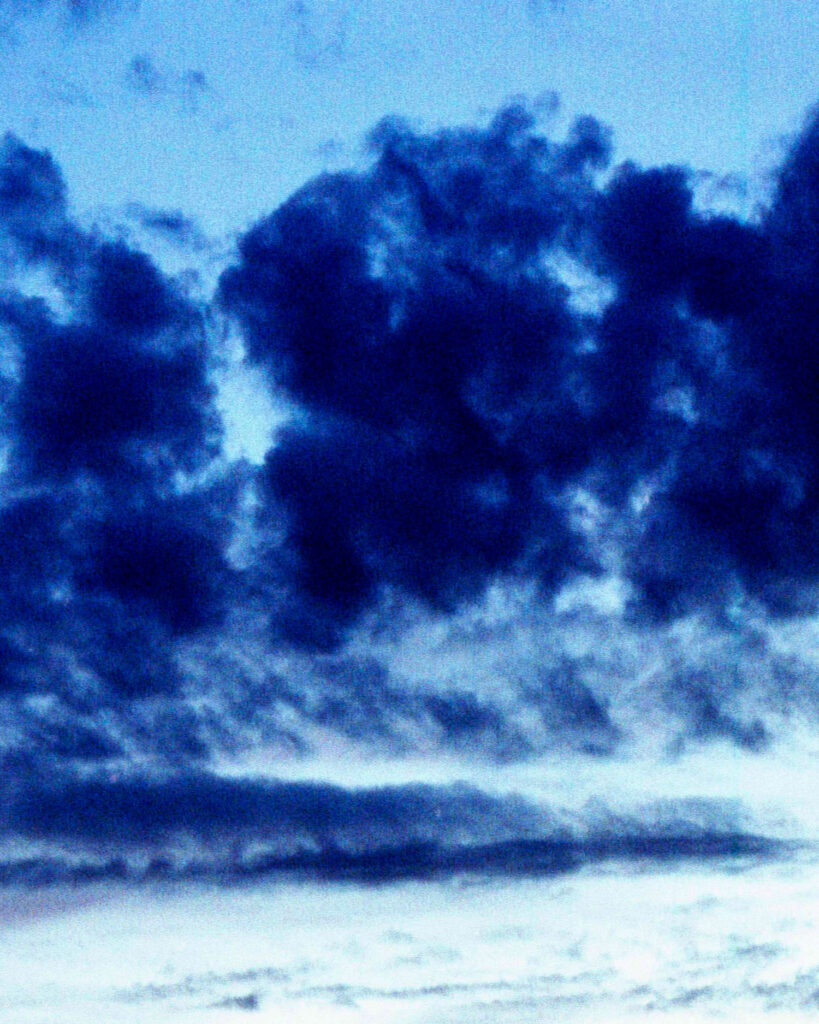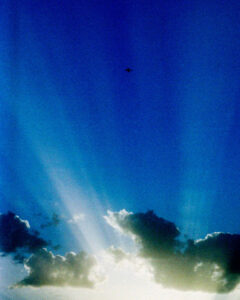
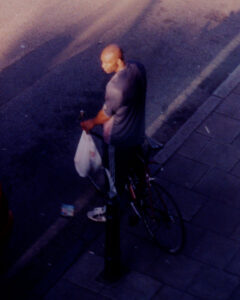
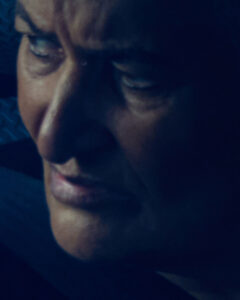
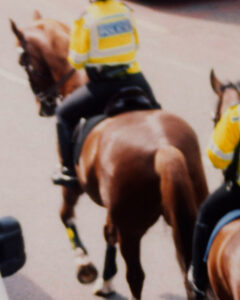
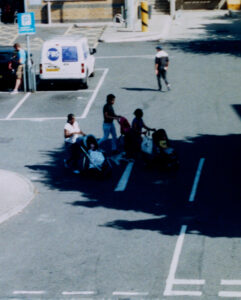
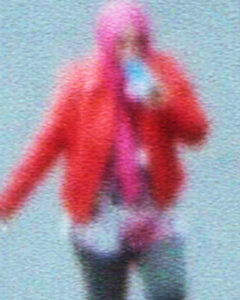
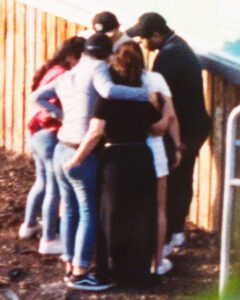
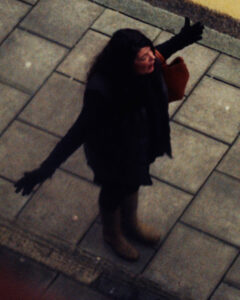
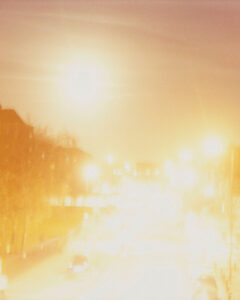
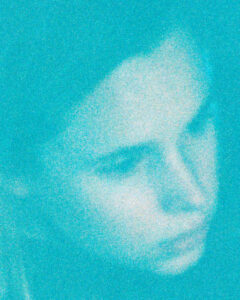
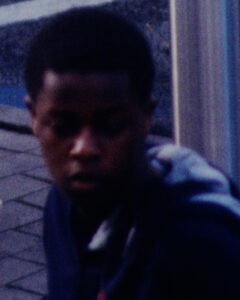
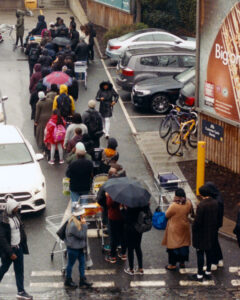
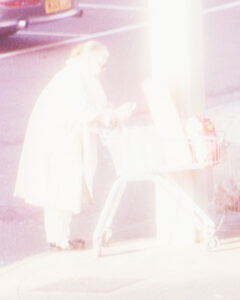
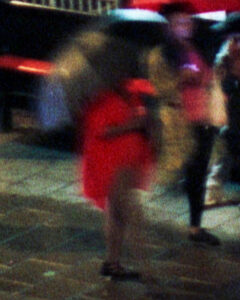
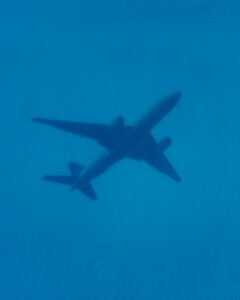
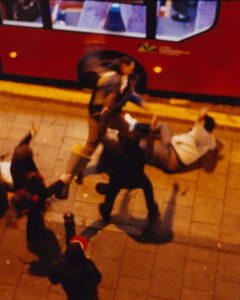
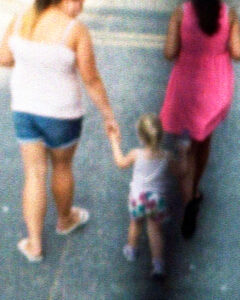
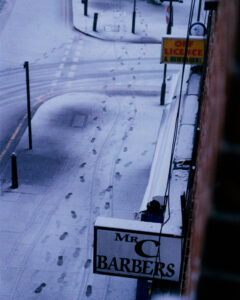
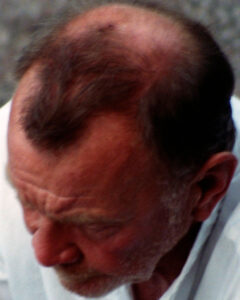
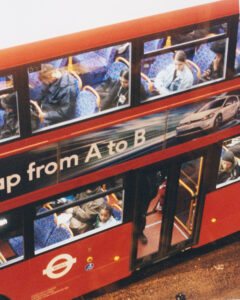
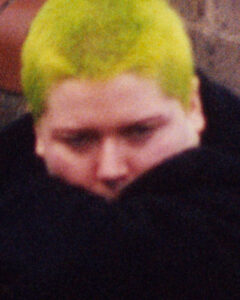
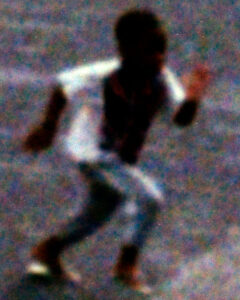
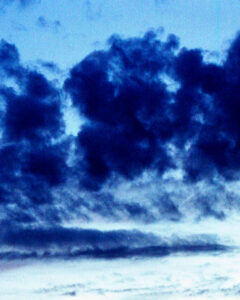
Between 2011 and 2022, Gareth McConnell created an unusual series of images of London. Photographed from within his own home, by pointing a camera out of a second-storey window, they capture people, relationships, situations in the course of everyday life. People walk, hold hands, huddle, gesture and fight. The city pulses. Directly across the road from McConnell’s window, in a supermarket car park the spectacle of ordinary life unfolds in a series of striking tableaus. Along the busy street, wheels turn, carrying people to their destinations via pram, bicycle, car and bus. Beneath the window the graphic ‘X’ of a woman, her arms flung out in protest, stands out against the regular pattern of paving slabs. On a different day, the tracks of feet, trollies and bikes mark out lines of desire across the snowy ground. Elsewhere, the camera plays with light to inspire mystical effects. In long exposure pictures, the moon’s milky glow is mirrored in the pale spillages of streetlamps and headlights. The sun anoints a lone figure standing alongside her shopping and transforms a nearby pillar into a transcendent shaft of light. Or it shines starkly overhead bringing out the sheen in the coat of a mounted police horse. These varied glimpses, all observed from the same vantage point, show the city in a state of constant change and renewal.
A photograph only ever shows part of a story, and this is especially true of these images, which McConnell made by selecting small areas of interest in the original photographs shot from his window and cropping away all the rest. Features that would have been all but lost amid the dominant lines of the urban environment are then enlarged and printed, and in the process, elevated to the status of main attraction. These selected fragments claim our attention in new ways, inviting us to linger on textures and tones of skin, the form of a head, the consistency of hair, and the cut of clothing. Colours begin to separate into their primary components, shadows intensify, and interactions evoke sacred geometry. The grains of negative, digital and paper accumulate on the surface of the printed photograph.
Liberated from context, these photographic snippets yield to new meanings and interpretations, blossoming into stories. A fleeting moment turns into an intrigue: what is happening here? A casual passerby lends the image a particular mood, which flourishes into a series of questions: where is she going, what does he want, who are they running from?
Within the series is a subset that carries a particularly intense affect, in which the image has been tightly cropped to retain little more than an individual’s face, thus converting a dynamic street scene into an impromptu portrait. These subjects sometimes appear lost in thought, in the throes of a powerful emotion or at peace, displaying what McConnell describes as “the reverie of a face gazing into the middle distance”.
Seeing these close-ups of faces absorbed in their inner experience might give rise to a feeling of identification, a sense of kinship, the possibility of relating to the person in the picture. We might recognise that look, we’ve been there ourselves. At the same time, such images could also provide an opportunity to dwell on difference, to crop out what we already know we have in common with strangers and honour instead what is unique about this other face. For Emmanuel Levinas, a philosopher who preferred to think of philosophy as the wisdom of love rather than the love of wisdom, the face of another is the site of a radical and irreducible alterity: it signals a kind of difference that evades our attempts to reduce it to sameness. And in this difference lies the infinite mystery of the other, which cannot be captured or contained, not even by a photograph. McConnell’s images remind us that this infinite mystery is all around us; sometimes all we have to do is look out of the window to find it.
—Ellen Mara De Wachter
